One of the most beautiful cities in Portugal, with a staggering number of unique attractions, there is so much to do and see in Lisbon, Portugal.
There’s no denying, thanks to increased popularity in recent years, Lisbon has become a little more expensive.
However, it’s still an enriching city to visit, even on a budget – there is also an incredible amount of free things to do in Lisbon that will have you swooning for Portugal’s capital.
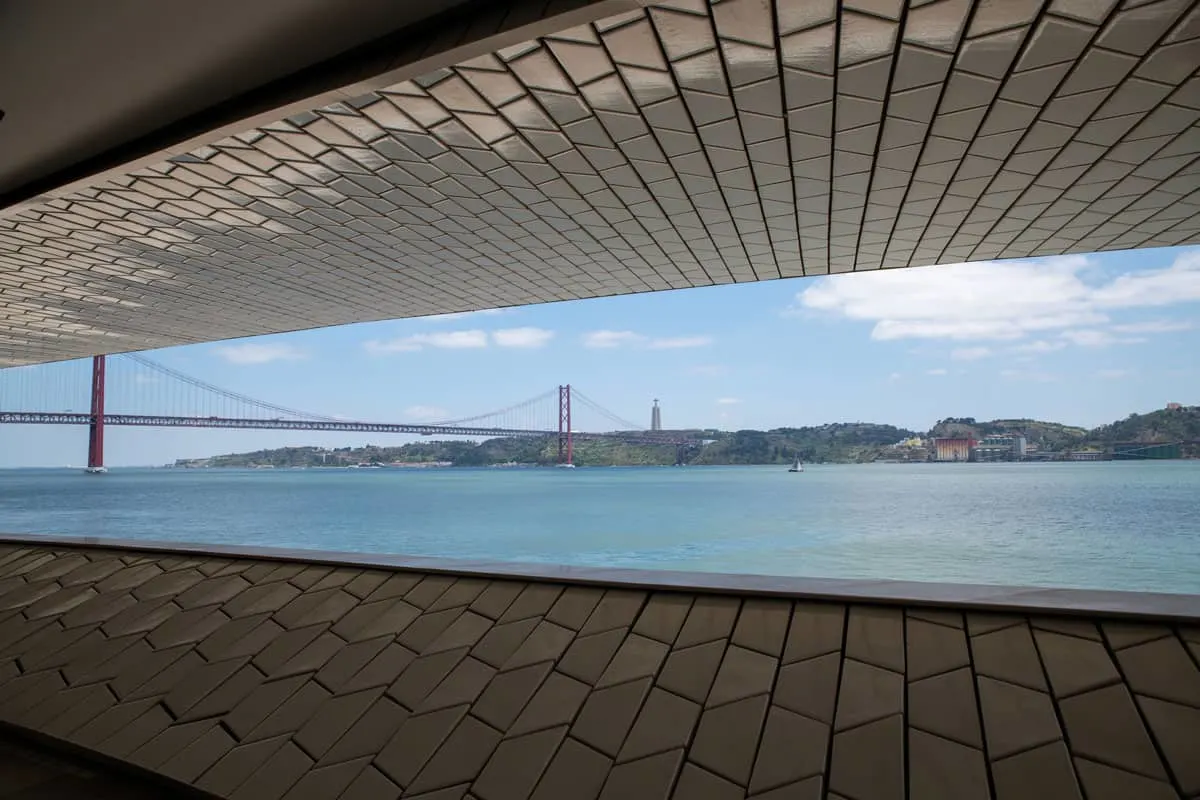
Lose yourself in the city’s quaint cobblestone streets. Many are so steep they afford the most spectacular views from the top. Hang out in picturesque city parks and stroll around some of the city’s most famous landmarks.
Discover Portugal’s fascinating history and incredible gastronomy, and lose yourself to the capital’s unique and vibrant culture. There is so much to do in Lisbon. We’ve narrowed down some of the best things to help you plan an unforgettable (and budget-friendly) Lisbon itinerary.
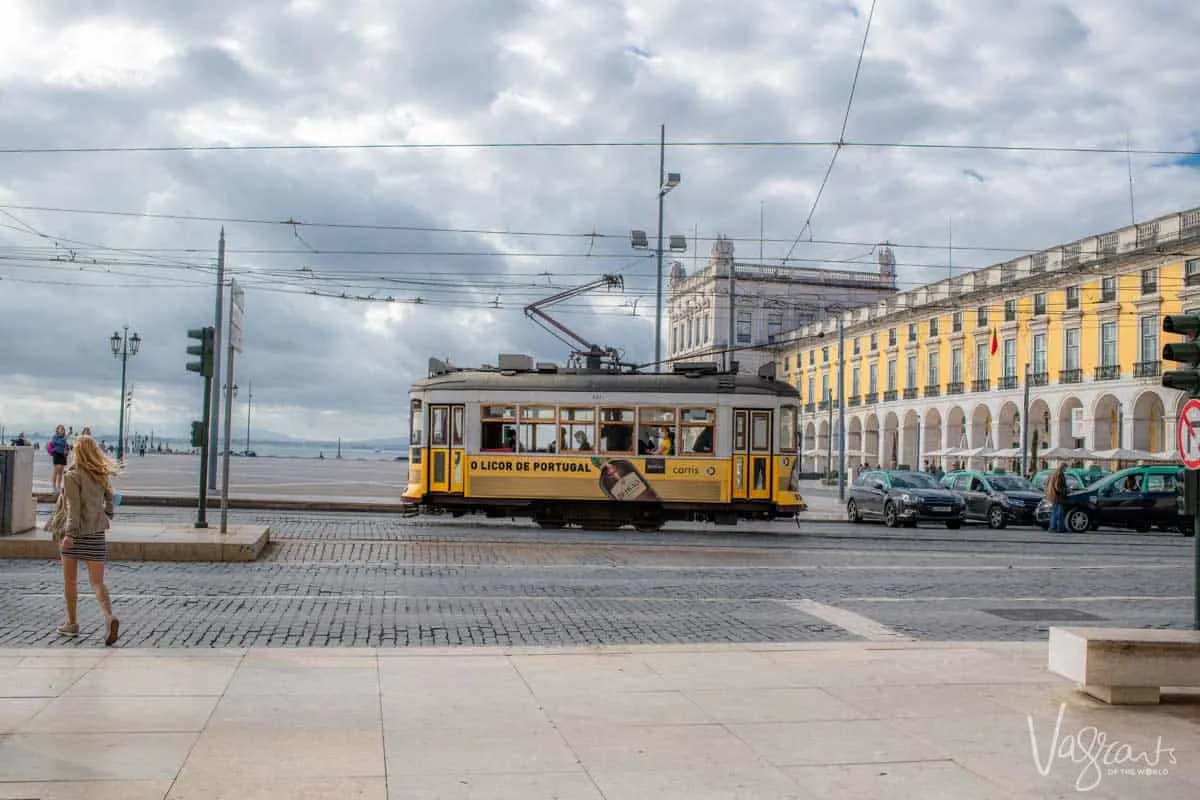
You Might Also Like: Lisbon is one of our top picks for places to visit in Europe in December for mild weather and traditional Christmas festivities.
Tips for Visiting Lisbon
Grab a Lisboa Card
The Lisboa Card is a great way for visitors to make the most of the attractions Lisbon offers. It’s also a great starting point for those unsure of what to see and do in Lisbon.
The card includes free unlimited transport on all public transport systems. Free and discounted entry to more than 80 attractions around Lisbon.
Cards can be purchased depending on how many days you require-
- €20.00 for 24 hours
- €34.00 for 48 hours
- €42.00 for 72 hours. This is the best value at around €14 per day.
See here for more information: Lisboa Card
Did You Know? Lisbon is home to the Vasco da Gama Bridge, which connects Portugal’s northern and southern parts. At over 17 km (10 miles) long, it is the longest bridge in Europe. It is named after the famous Portuguese explorer Vasco da Gama.
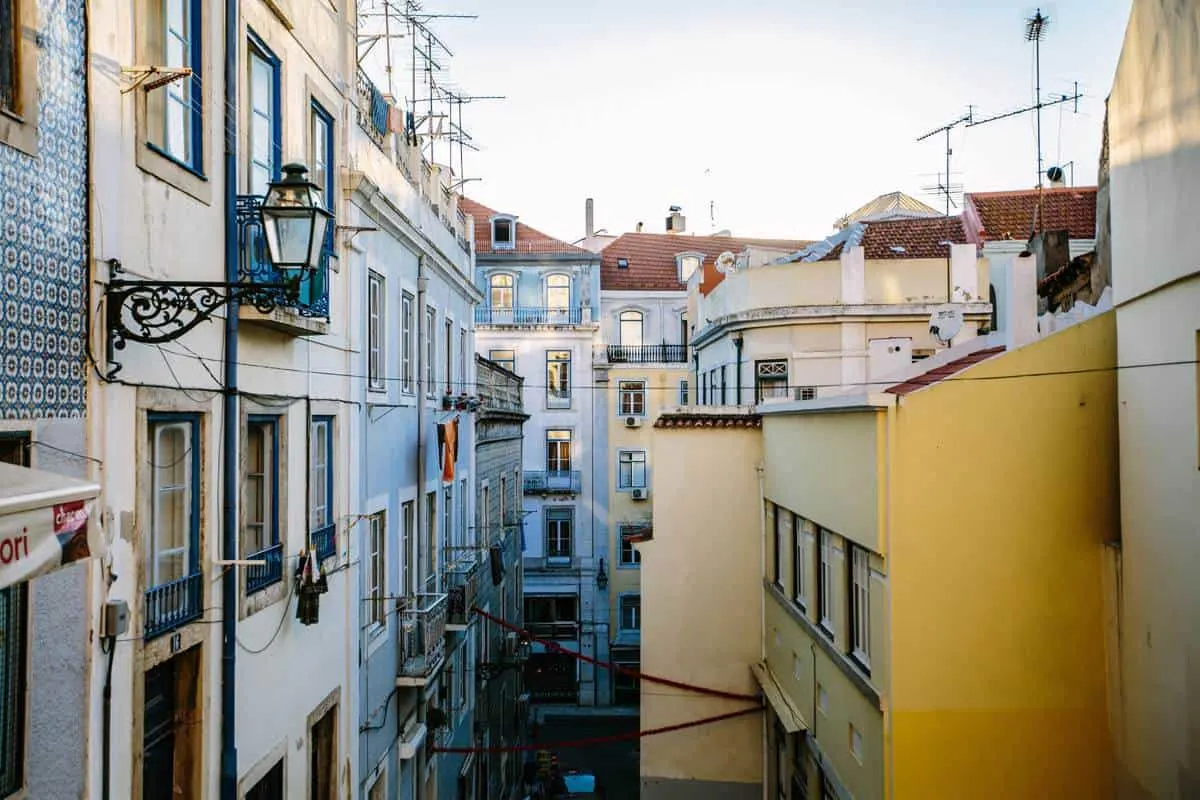
Take the Lisbon Yellow Hop on Hop off Bus
Even if you have never considered the hop on hop off bus, they are a great way to see the best Lisbon sights without navigating public transport. They are also ideal for families with younger children.
The Yellow Bus in Lisbon has several routes or tours, including a Yellow Boat tour. These Lisbon Tours are a great way to make the most of your time in Lisbon independently of a tour. It also helps you get your bearings for exploring on your own.
Prices start at €8.10 depending on the tour. Find out more about Lisbon Yellow Bus tours here.
Best Things to See and Do in Lisbon
Visit Belém
Belém is Lisbon’s most historical and monumental area, four miles west of Lisbon City. Set on the waterfront, alfresco cafes line the streets, and loads of beautiful gardens and parks attract people to soak up Lisbon’s delightful climate.
Belém has a beautiful vibe and a fantastic array of things to visit, many of which are free.
Things to do in Belém
- The Monastery of Jerónimos
- The iconic Belém Tower – Torre de Belém.
- The Maritime Museum.
- The Berardo Museum Modern and Contemporary Art
- The Discovery Monument.

The Monument of the Discoveries
One of the most important things to see in the Belém neighborhood is the 52-meter-tall Monument to Discoveries. The monument celebrates the Age of Discovery and the explorers who led the way in Portugal’s overseas expansion and building of the Portuguese Empire.

The design represents a ship’s prow, and you’ll find the figures of over 30 prominent people who played an important role in Portugal’s expansion carved into the monument. Just in front of it is a huge marble map of the world, showing the routes of Portuguese ships during the Age of Discovery.
There’s an option to pay to enter the monument, which includes some exhibition space and an elevator to the top, but this isn’t necessary. The best bits of the monument can be viewed for free from the outside.
Jerónimos Monastery
One of Lisbon’s most prominent landmarks, the magnificent UNESCO World Heritage site Jerónimos Monastery, is a feast for the eyes. The massive monastery on the banks of the Tagus is one of the most notable examples of the Portuguese late Gothic Manueline style of architecture.
Intrinsically linked to the most glorious times in Portuguese history, “The Age of Discoveries”, construction began on the monastery in 1501. It lasted a hundred years, funded with the “Vintena da Pimenta” – the spice tax on trade with Africa and the East. Jerónimos was secularised in 1833 by state decree, and ownership was transferred to the charitable institution Real Casa Pia de Lisboa.
You can visit daily except Mondays between 10.00 – 17.00.
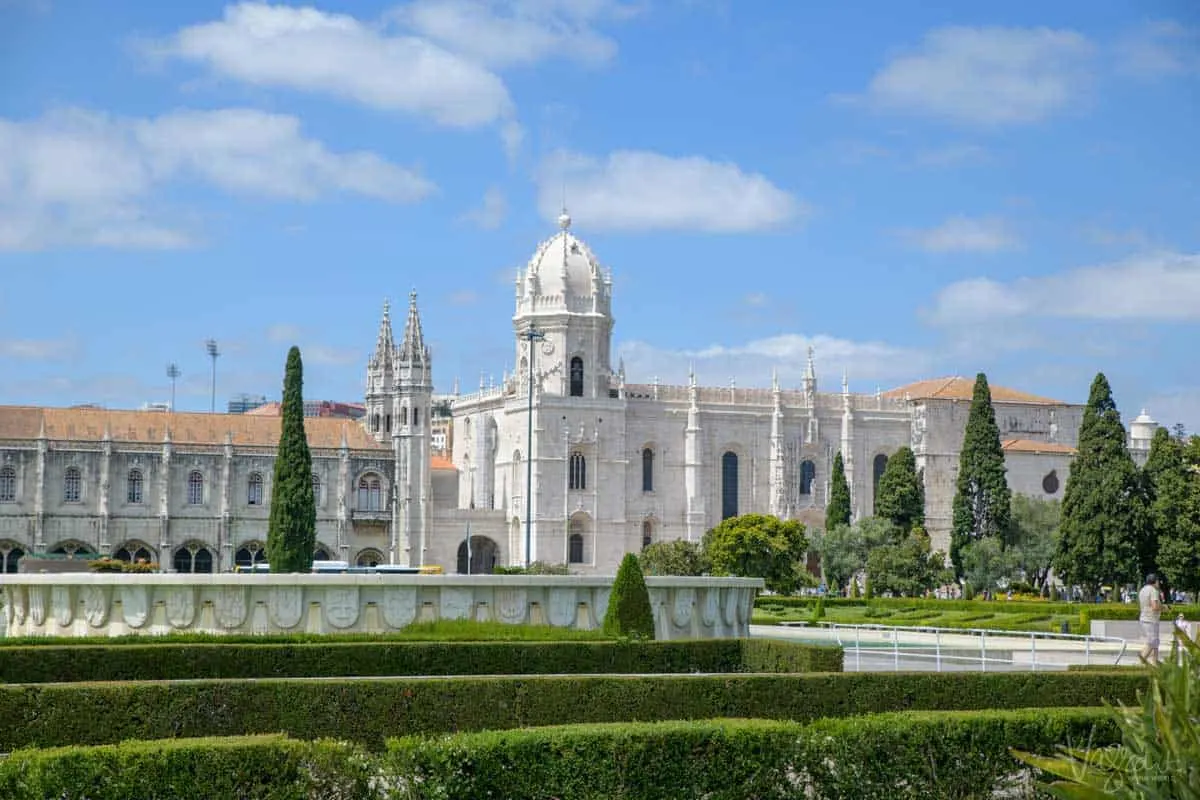
Eat Pastel de Nata (Portuguese Egg Tart)
You can’t visit Lisbon and not eat the world-renowned Pastel de Nata. If you go to Belém for no other reason than this, all is forgiven. It is in Belém where you will find the famous Pastéis de Belém, the home of the Pastel de Nata – The original and best Portuguese egg tart created before the 18th century by Catholic monks at the Jerónimos Monastery.
This not-so-small bakery usually has a queue out the door and down the road- and that’s just for the takeaway tarts. Stop in, find a table, and savor one of these fantastic culinary morsels. If you have time, take a Lisbon food tour or, even better, a Pastel de Nata cooking class to become more acquainted with these world-renowned tarts.
Related: Conserveira de Lisboa. The Best Food Souvenir Shop in Lisbon

Lisbon Museums and Galleries
Lisbon has an incredible array of art galleries and museums to keep you going for days. The Belém Cultural Centre houses a fantastic collection, including Dali, Picasso, Warhol, and Magritte.
Go Lisbon has a comprehensive guide to the best in contemporary, modern, and traditional exhibitions. The Lisboa Card will get you free or discounted entry to most of these.
Tip: Many Museums and galleries in Lisbon, as in most of Europe, are closed on Mondays.
Discover Portuguese Azulejos in the National Tile Museum
Portugal is famous for its Azulejo tiles which are evident nationwide. While this type of tile art features throughout the Mediterranean, Portugal has a particular style with the most innovative and vast uses of this tile work.
The Museu Nacional do Azulejo National Tile Museum in Lisbon is the only one dedicated to the art of Azulejo tiles.
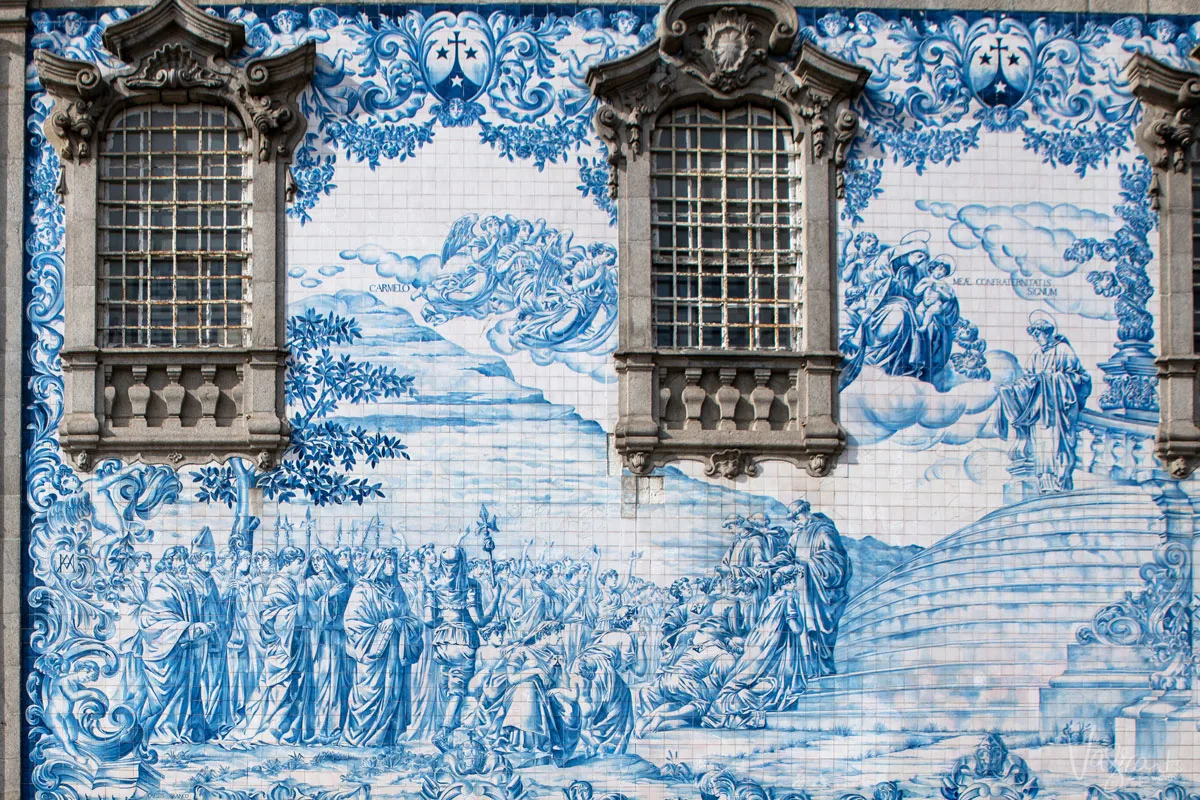
Set in the magnificent Madre de Deus Convent, founded in 1509, the collection features some outstanding tile works, including pieces dating back to the 1400s.
Be sure to visit the Madre de Deus church attached to the convent. The church is a stunning example of Portuguese baroque splendor, with gilded and carved wood, paintings, and tile panels.
Where: The National Tile Museum is at – R. Me. Deus 4, 1900-312 Lisboa. You can take Bus 759, which departs from Restauradores Square.
Admission is €5 or free with the Lisboa Card.
Visit One of Lisbon’s Free Museums
Many museums in Portugal are free to residents and citizens on Sundays and public holidays. But visitors to Lisbon also have a vast array of museums to choose from, all free of charge.
These are a few museums in Lisbon you can visit for free.
Museu do Dinheiro (Money Museum)
Discover the history of money from around the world, including pre-monetary currency, the production of banknotes and coins, and money’s role in citizens’ lives throughout history. The exhibition offers visitors an engaging multimedia interactive experience. See the Museu do Dinheiro website for opening hours and exhibition information.
Berardo Collection Museum (Museu Coleção Berardo)
Visit Lisbon’s most acclaimed modern and contemporary art collections for free. The collection was acquired by Portuguese businessman Joe Berardo, with the assistance of friend Francisco Capelo, whose own collection is seen in Lisbon’s Mude Design and Fashion Museum and is considered one of Europe’s best collections.
See works by some of the biggest names in contemporary art, including Warhol, Picasso, Dali, Duchamp, Magritte, Miró, Jackson Pollock, and Jeff Koons.
See the Museu Coleção Berardo for opening hours and exhibition information.
MAAT Museum (Museum of Art, Architecture, and Technology)
One of the most striking landmarks of modern architecture is a worthwhile visit to walk around and appreciate the structure’s beauty. It also affords some of the best views in Lisbon.
If you happen to be in Lisbon on the first Sunday of the month, you can see the exhibitions inside for free. See the MAAT website for more information.
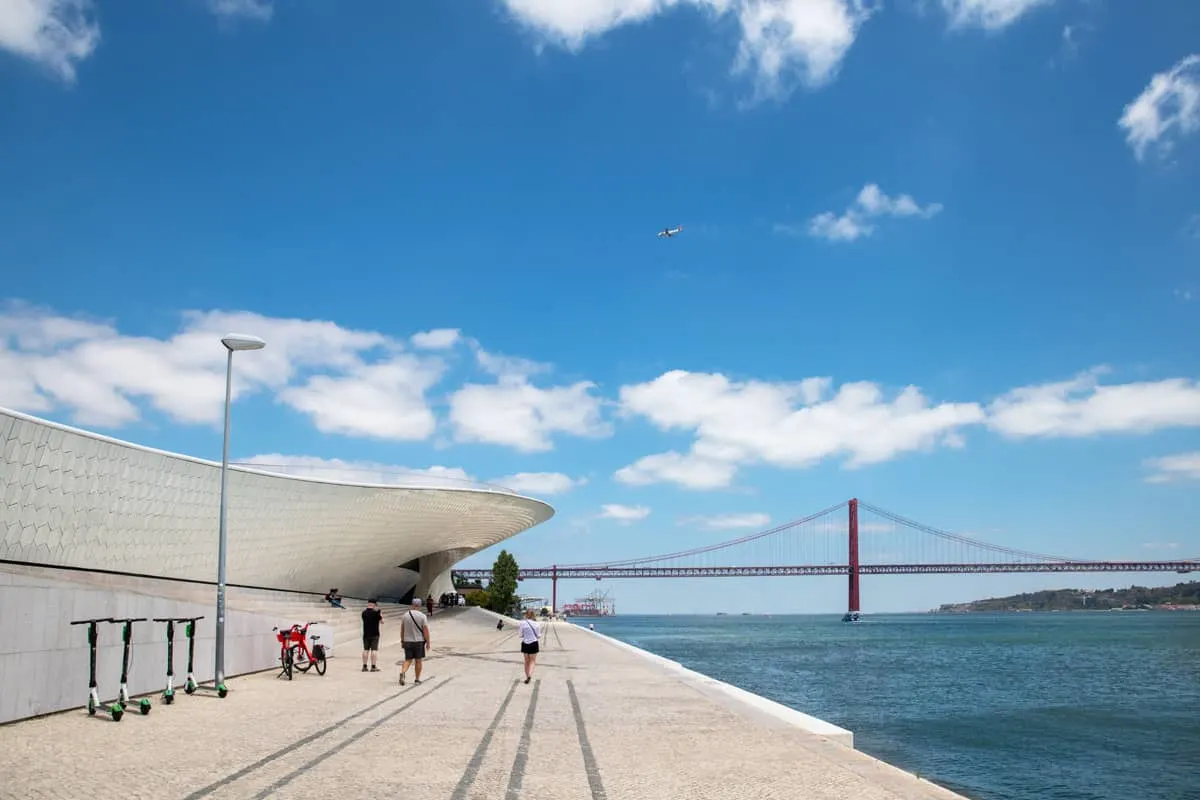
MUDE Museu do Design e da Moda (Fashion and Design Museum)
A must-see for anyone interested in design and fashion. An acclaimed collection, see over 1000 design objects and over 1200 couture pieces by famous names such as Jean-Paul Gaultier, Vivienne Westwood, and Yves Saint Laurent. The collection includes a famous Jean Dresses gown that Renee Zellweger wore to the 2001 Oscars and Christian Dior’s landmark 1947 New Look.
See design trends from around the world, including classic pieces embracing innovative design in furnishings, glass, and jewelry from 1937 to the present.
See Mude Design and Fashion Museum website for opening hours.
Núcleo Arqueológico
Discover the past lives of Lisbon and more than 2500 years of history as you climb down to the Núcleo Arqueológico da Rua dos Correeiros.
See overlapping structures ranging from the Iron Age to the Pombaline period. You can take a free 45-minute guided tour of the ruins beneath Lisbon or explore the underground world of Baixa on your own.
See the Núcleo Arqueológico website for opening hours and tour times.
Stroll the Praça do Comércio
In the city center, o the Tagus River banks, the main city square is one of the most scenic attractions in Lisbon.
The largest royal square in Western Europe and the second-largest in the continent after St. Petersburg’s Palace Square. Surrounded by bright yellow Pombaline-style buildings is the Triumph Arch – Arco da Rua Augusta, a symbol of Lisbon’s recovery from the catastrophic 1755 earthquake.
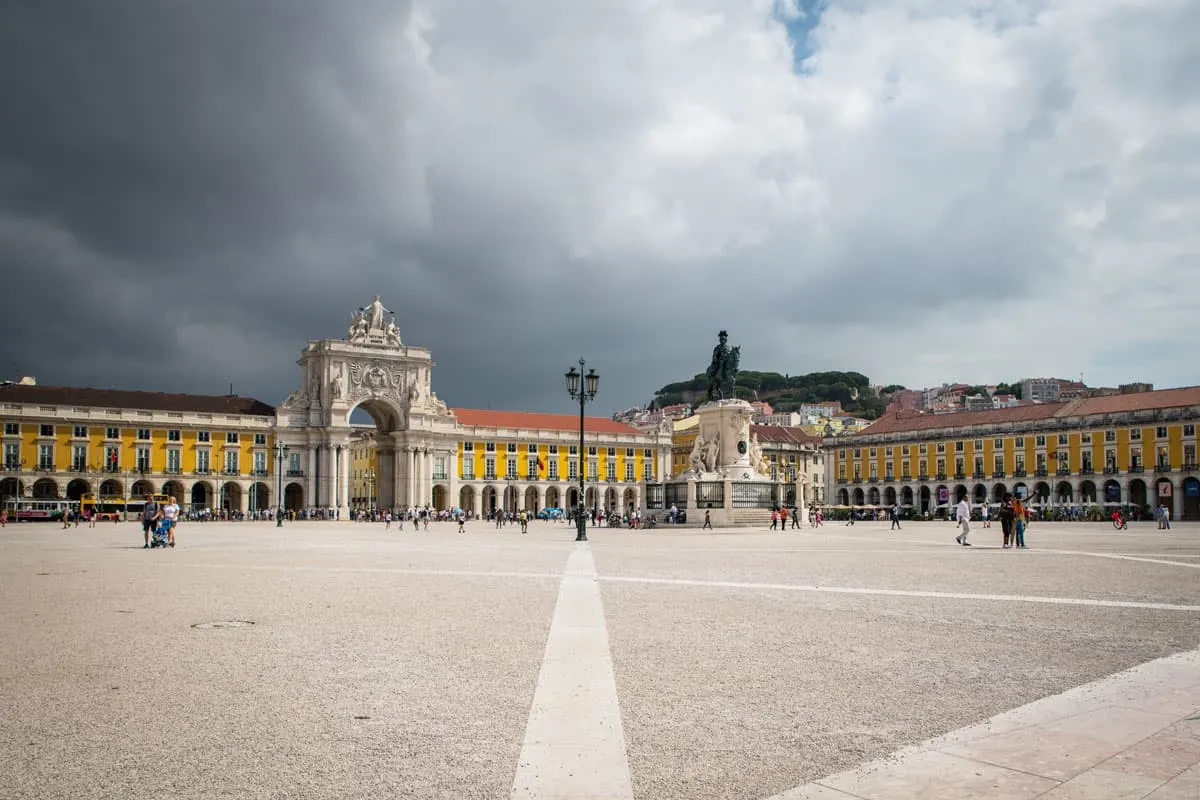
The famous Equestrian statue of King Joseph I, the King of Portugal at the time of the earthquake, takes center stage. A commemoration of the efforts King Joseph and his minister, Pombal, made in restoring the city.
However, you’ll notice that he’s facing toward the estuary – away from the city of Lisbon. Some locals believe this is a sly hint to the fact King Joseph I and his family deserted Lisbon when the earthquake hit, instead fleeing to Belém for safety.
You’ll also find Lisbon’s oldest café in Praça do Comércio, “Martinho da Arcada,” in business since 1782.
The Praça do Comércio is one of the city’s highlights and is free to visit.
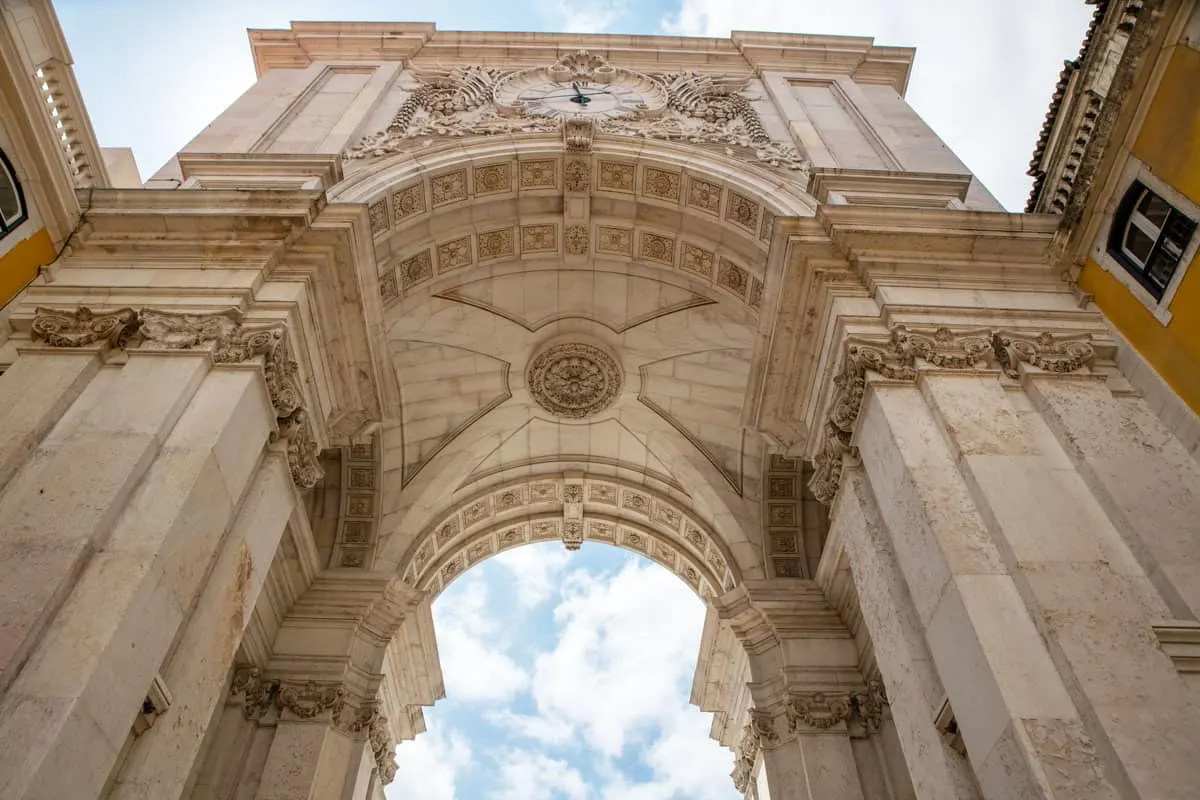
Sé the Lisbon Cathedral
In the Castelo area of the city center is the fortified Romanesque Lisbon Cathedral – Sé de Lisboa. It is the oldest and most important church in Lisbon.
Consecrated in 1105, the Cathedral survived several natural disasters until the great earthquake of 1755, which left much of the original cathedral in ruins.
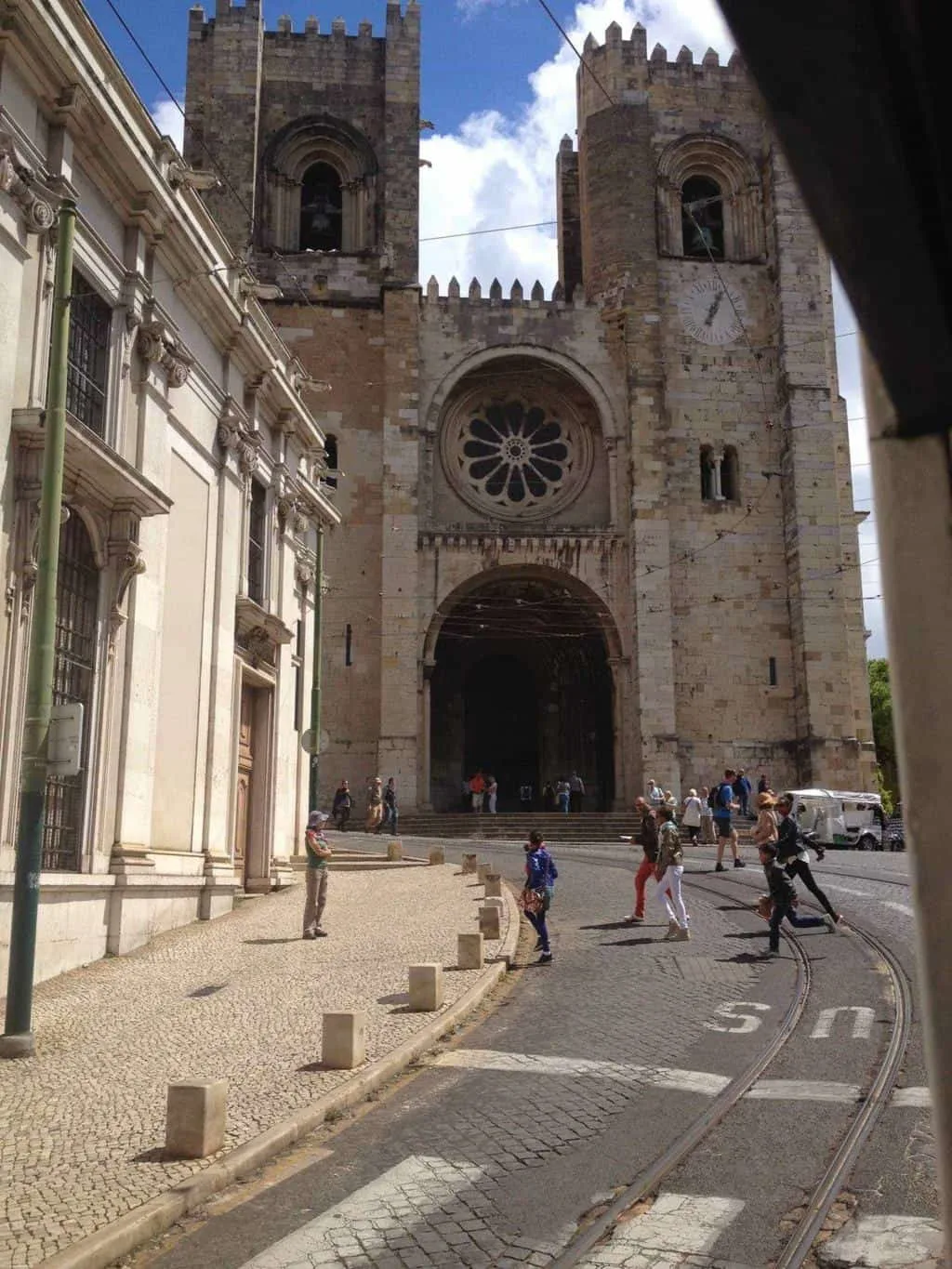
The Cathedral has been renovated and rebuilt throughout the centuries, resulting in a blend of architectural styles, including the twin castellated bell towers, a prominent Lisbon city skyline feature.
Visit the cloister, where you can see several Roman, Arabic, and Medieval remains excavated over the years – foundations of Moorish and Roman dwellings.
The entrance to the cloister is €2.50, but the archaeological site is well worth the fee.
On the second floor of the Cathedral is the Treasury. The Cathedral’s most valuable artifacts are displayed in four halls, including intricately embroidered vestments, jewels, chalices, rare manuscripts, and relics from various periods.
Visit São Jorge Castle
Towering over the city, Castelo São Jorge (St. Georges Castle) is hard to miss. It’s also one of the most popular things to do in Lisbon for visitors.
With evidence of the fortification dating back to the 1st century BC, it is one of the oldest landmarks in Lisbon. It was expanded in the 11th century by the Moors and again by King Alfonso I in the mid-12th century.
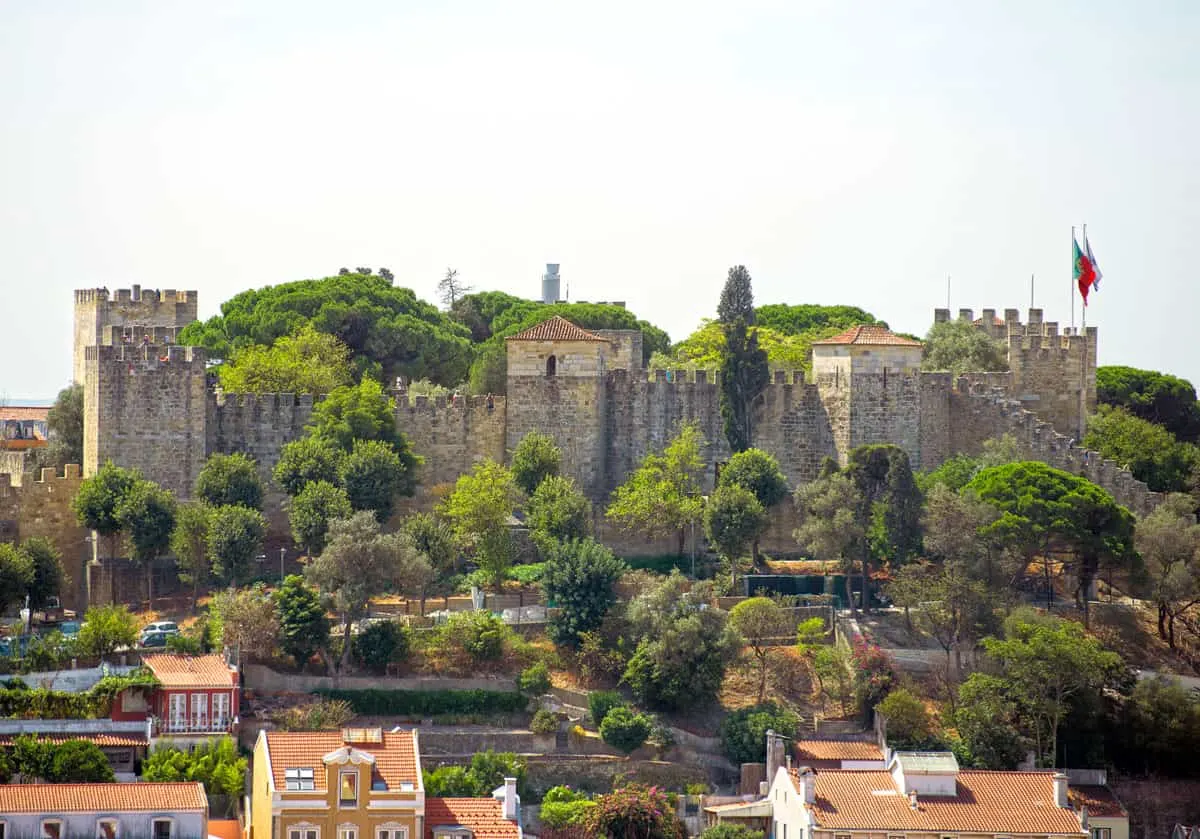
You have to pay to enter the castle, but you can walk up to the castle and walk around its exterior walls for free for one of the best viewpoints of Lisbon. You can snap some great photos of Lisbon from its best angle from the castle walls.
Tip: During busy times when queues can be long to enter, a skip-the-line ticket for São Jorge Castle with an escort is a great way to maximize your time in Lisbon. See here for more details.
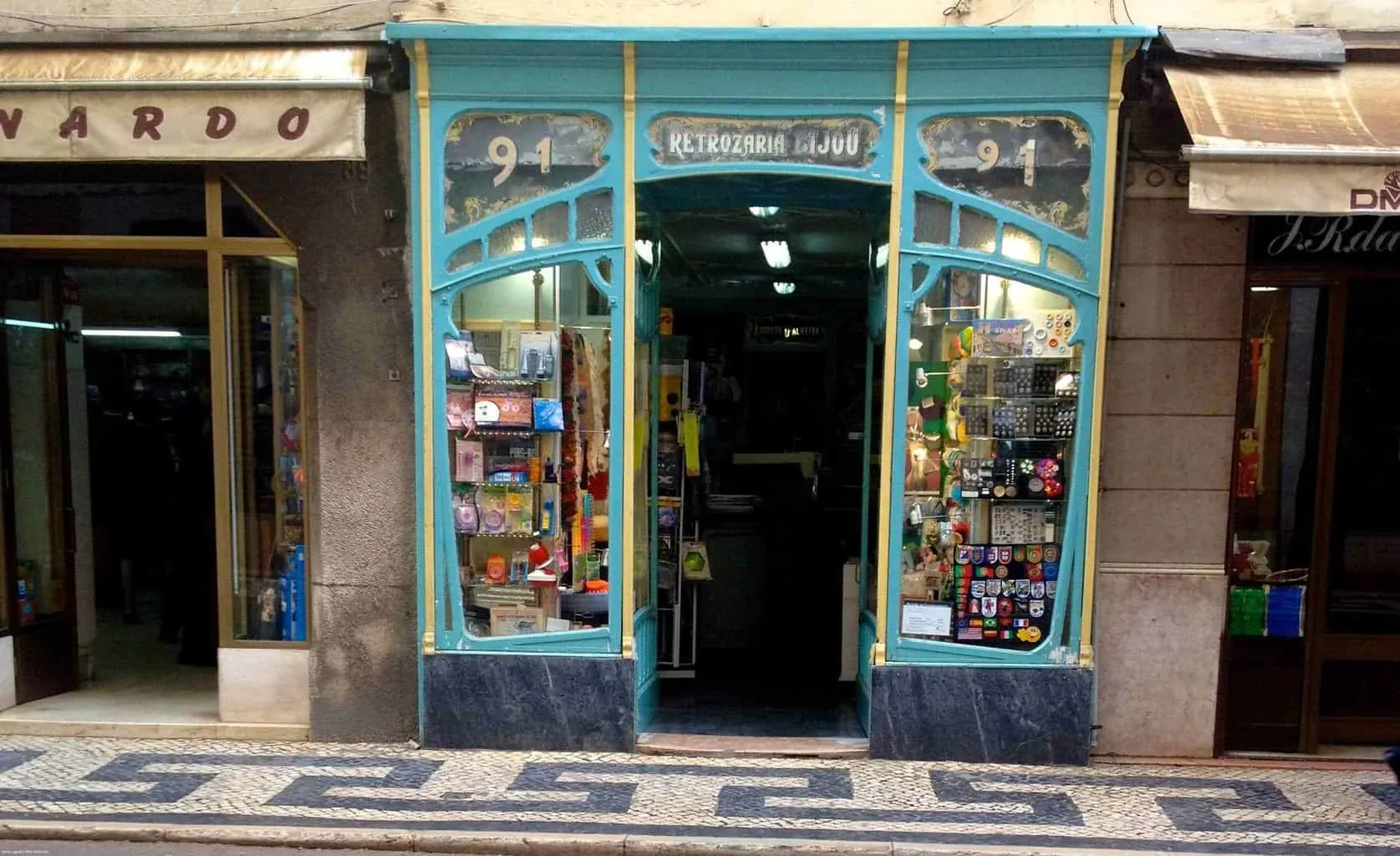
Related: Visit Lisbon like a local with these insider tips about the city.
Take the Number 28 Tram
Jump on the iconic Tram 28 for a ride through the historical center of Lisbon. These antique trams are a wonderful way to get a feel for the city, and it’s one of those “must” things to do in Lisbon for every visitor.
They clatter their way through impossibly thin streets. You sometimes think the tram will become wedged on corners or in-between parked cars. This is why the original narrow carriage design is still relevant today.
A ride on the tram can be a little expensive if you buy individual tickets. Expect around €3.00 a ride. However, a 24-hour travel pass will cost around €4.00, which is the best value for those visiting Lisbon on a budget. Or, use the Lisboa card, and you can hop on and hop off at any of the stops on the route. An excellent way to see the best places in the city center.
Tip: These trams get very crowded, and pickpockets are common, so mind your belongings.
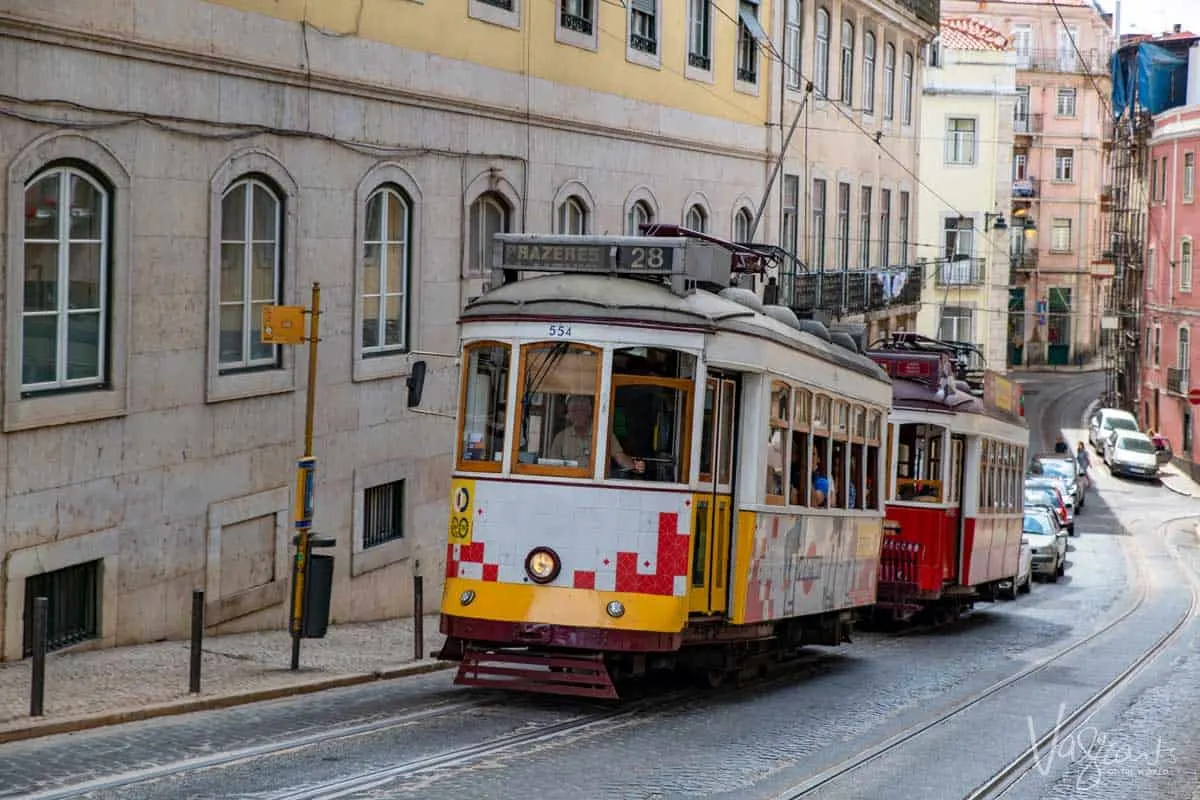
Walk the Route of Tram 28
Tram 28 is, without a doubt, one of the most famous attractions in Lisbon. While a ride on the little yellow trams is a must, there is another way to experience their unique place in the city.
Avoid the crowded trams (and the pickpockets) and take a self-guided walking tour of the Tram 28 route.
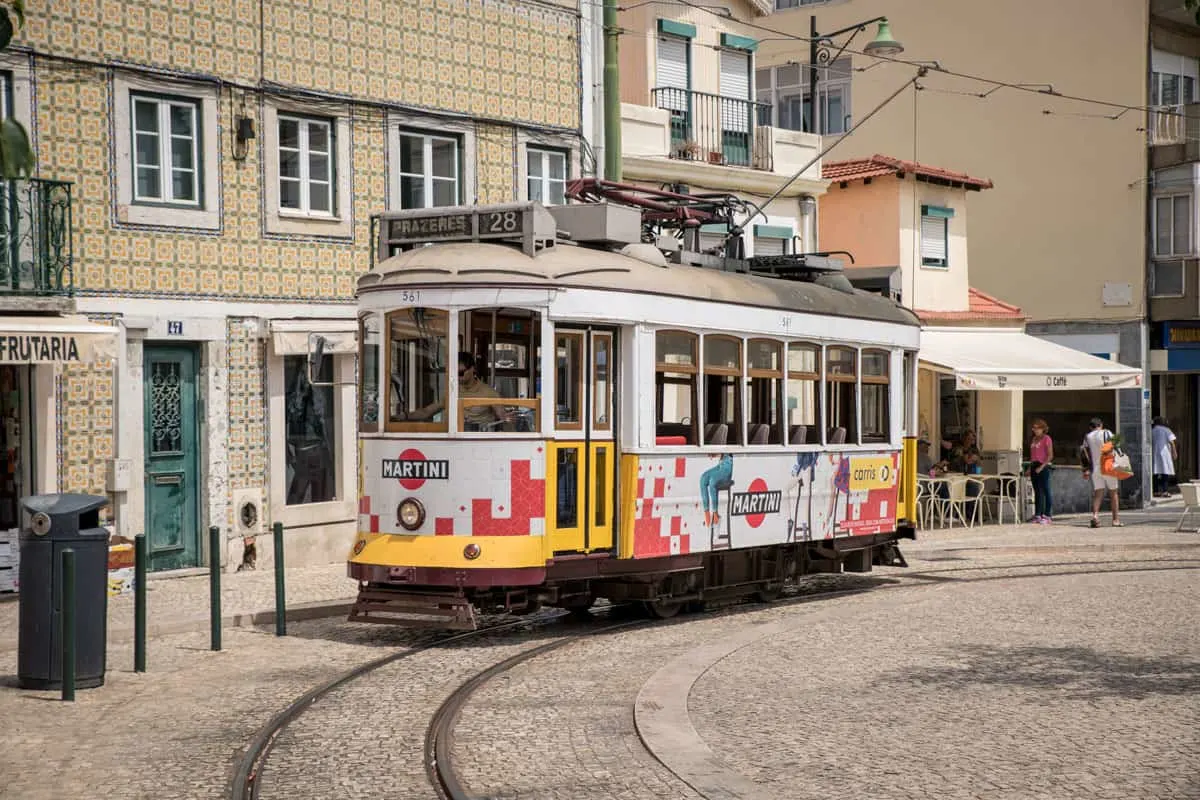
Tram 28 route runs from Martim Moniz to Campo Ourique, passing through the famous tourist districts of Graca, Alfama, Baixa, and Estrela, passing many of the city’s most famous and beautiful spots – it’s like a quick tour of Lisbon’s highlights. The entire route is around 7km.
Stay Safe While Travelling in Europe: We’ve got the Best Safe Travel Tips & Anti Theft Travel Gear Guides to help you plan your trip.
Exploring the route on foot, you can stop at places that interest you and explore the area slowly from street level rather than from a crowded tram as it hurtles through the tiny streets.
It will take a couple of hours to walk it, but think of the time you’ll spend queuing to get on the jam-packed tram at each stop you jump off.
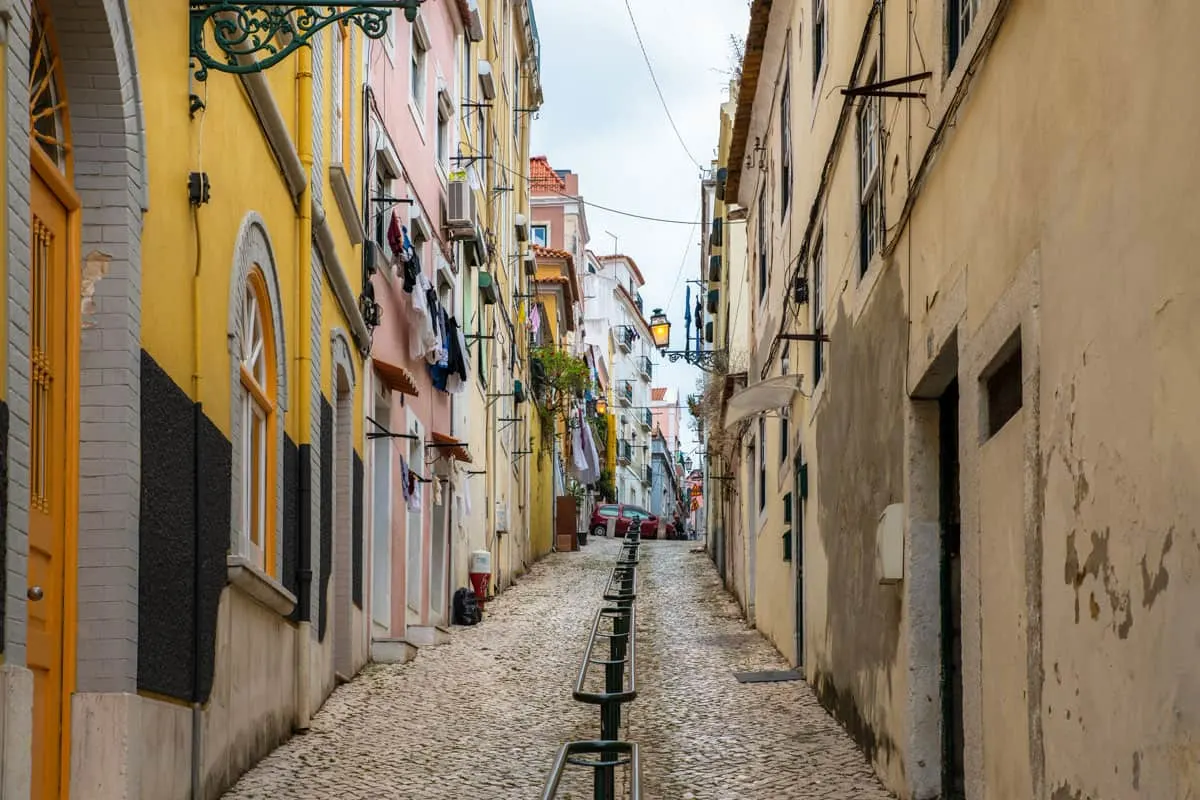
Ride the Funiculars
As iconic as Lisbon’s trams, so are the city’s funiculars and “elevadores”.
Like the ancient city of Rome, Lisbon was built on seven hills. The town planners of Lisbon designed a series of funiculars and lifts to move people and goods between the upper and lower neighbourhoods.
There are three funiculars in Lisbon – Ascensor da Glória, Ascensor da Bica and Ascensor da Lavra and one elevator – the famous Santa Junta Lift “Elevador de Santa Justa”. Take a ride on these charming modes of transport dating back to the late 1800s. You are always guaranteed sweeping views from the top.
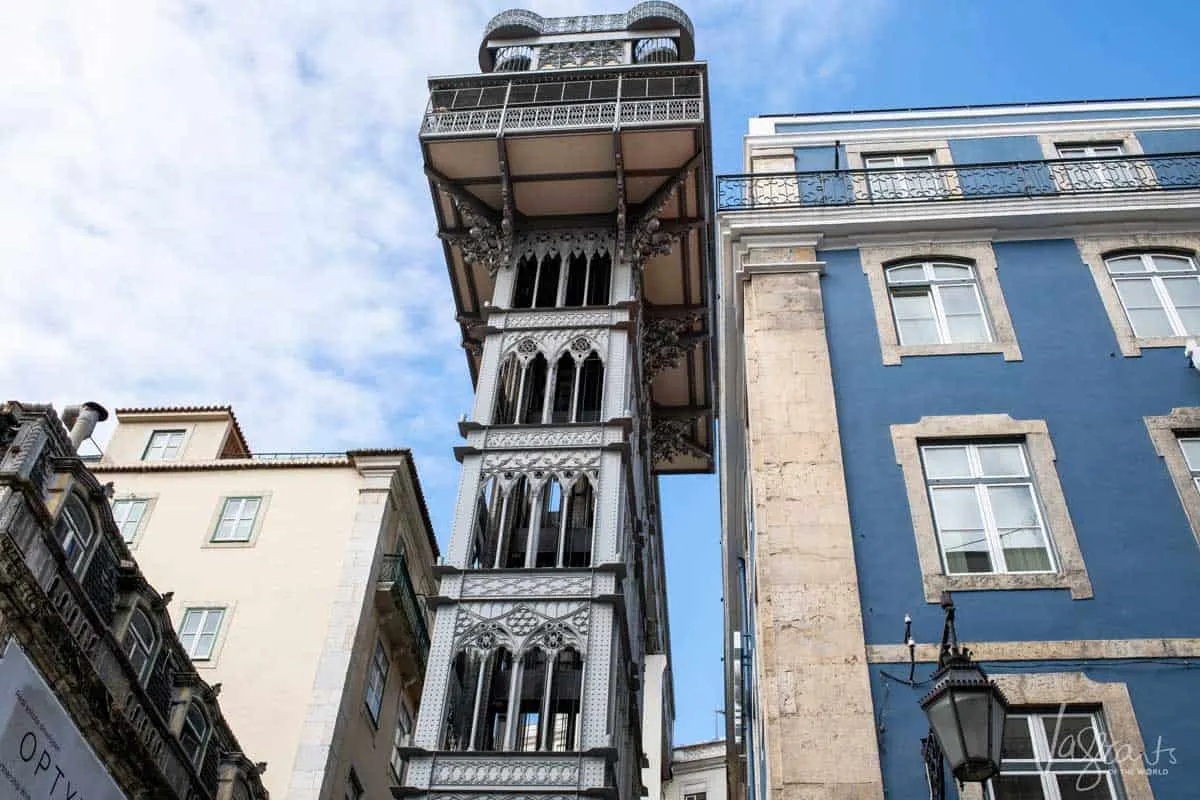
Explore Historic Alfama
The Alfama district is the oldest neighbourhood in the city and the only neighbourhood to survive the Lisbon Earthquake of 1755. Wandering around Alfama, you get a real feel of what the ‘old’ Lisbon must have been like. Mazes of narrow cobblestone streets, flowered balconies, traditionally tiled facades and hidden cafe culture.
Alfama has given inspiration to novelists and poets throughout history, so it has a reputation for being historical but also slightly bohemian. It is also home to a thriving Fado restaurant and music scene.
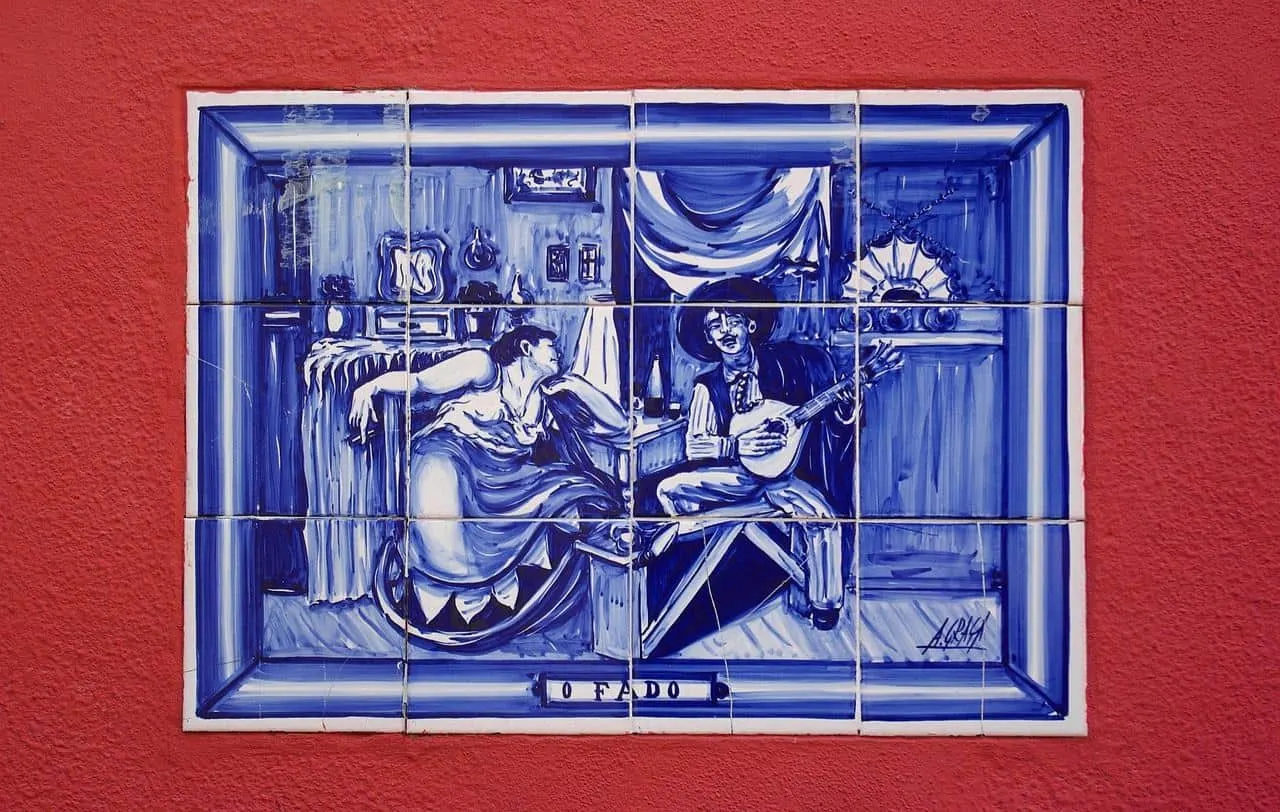
Historically, The Alfama was associated with poverty and poor conditions. However, as Lisbon became an international tourist destination, Alfama shrugged off its less-than-flattering reputation to showcase itself as one of the city’s most charming and quaint areas.
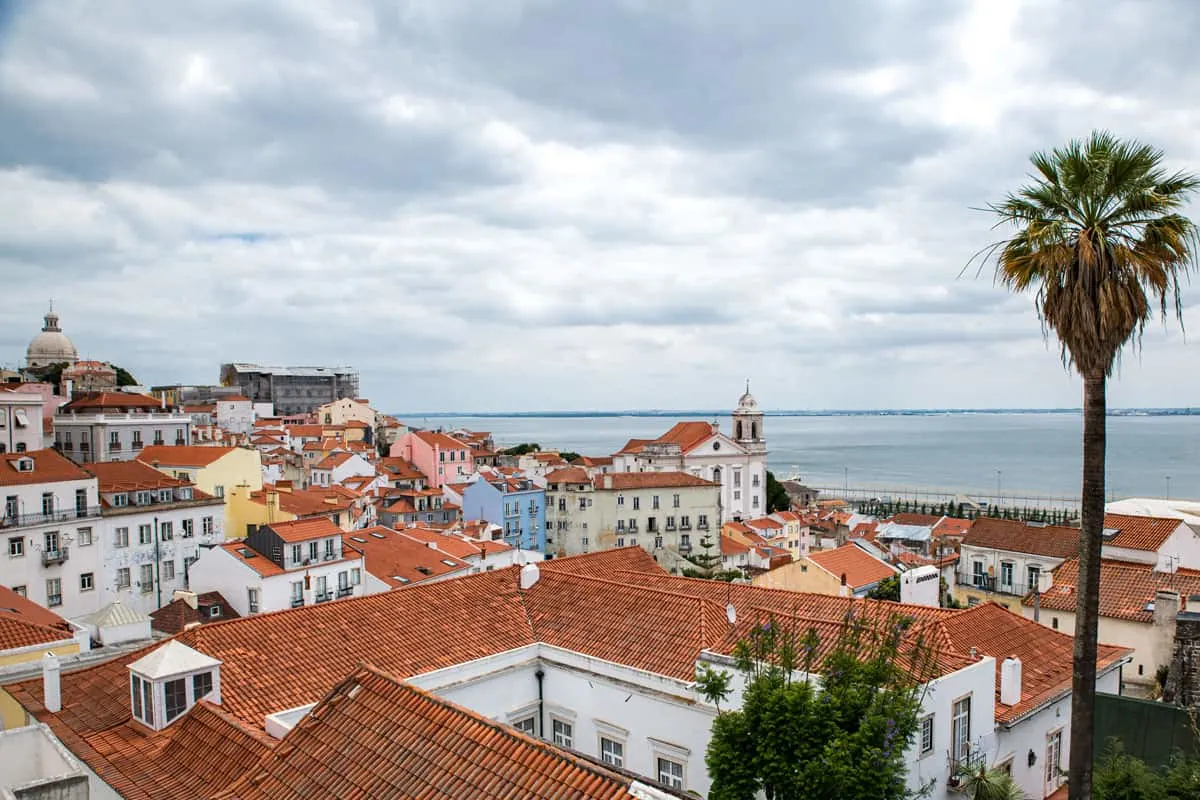
The best way to explore the Alfama is to aimlessly wander the steep cobbled streets, stopping to take in each panoramic viewpoint and see how the historic neighbourhood continues to survive by reinventing itself alongside lifelong locals with restoration projects, a modern cafe scene and independent boutiques.
Lisbon Walking Tour Recommendation
Discover Lisbon’s Hidden Gems with a Local Guide on a 3hr Walking Tour.
Get off the tourist trail with a Lisbon local on a private walking tour. Prices start at €22 pp, including a local guide, food tasting, and drinks at Lisbon’s oldest ginjinha bar. Find out more here.
Before You Go – Lisbon Travel Essentials
Catch a Free Fado Show
Lisbon is the birthplace of Fado music, the soulful, melancholic genre of music that can be traced back to the 1820s. Catching a fado performance should be on everybody’s Lisbon bucket list. Unfortunately, there are a lot of fado tourist traps that charge a fortune.
It might be easy to think that fado music only exists nowadays in overpriced tourist restaurants, but that couldn’t be further from the truth. There are quite a few places in Lisbon that offer free fado performances.
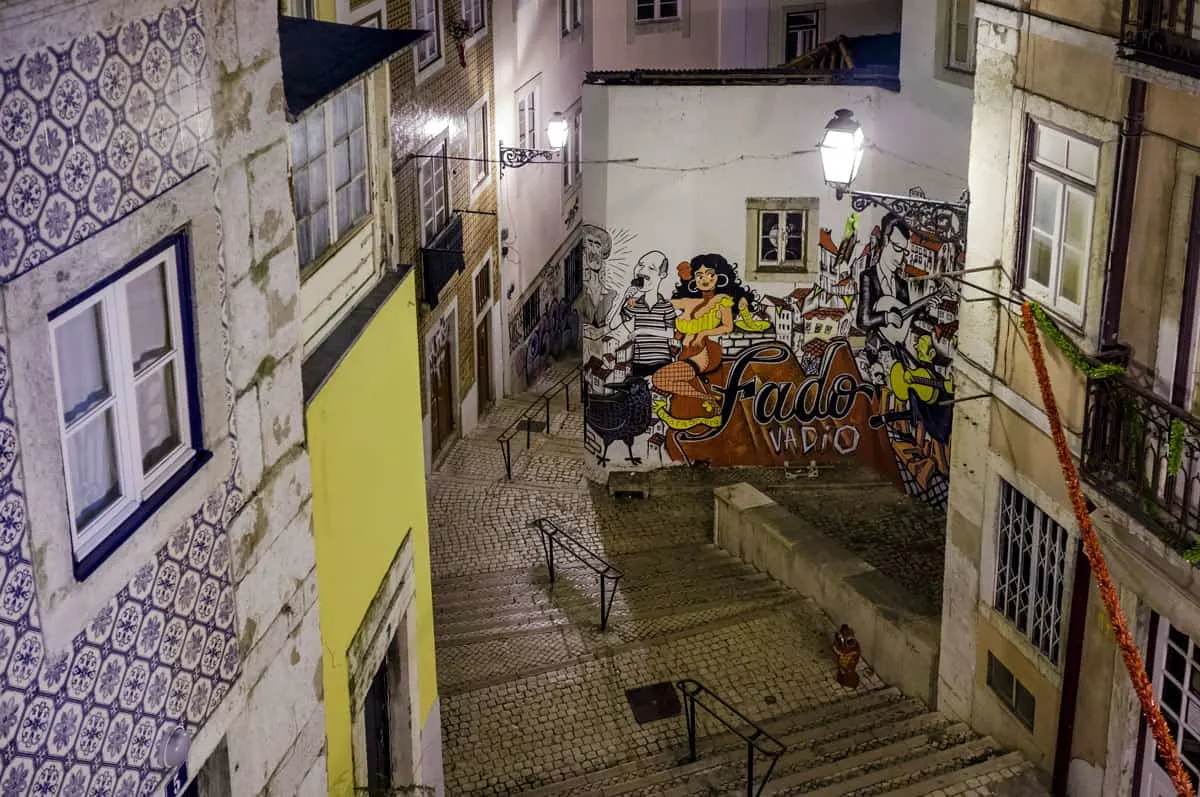
The locals’ favourite is Tasca do Chico. This beloved fado institution, open since 1993, has free fado shows every night at 8 pm. You can make a reservation, or just show up (but make sure you get there early as it’s very popular.). As you watch the fado, ordering some drinks or a round of tapas is customary, but you can just order something very cheap (like a beer) to catch the free performance.
Feira da Ladra Flea market
Located in Campo de Santa Clara, the market is held every Tuesday and Saturday from early morning to mid-afternoon.
Lisbon’s version of London’s Portobello Market, Fiera da Ladra, loosely translates to “thieves market”. This type of flea market is thought to have been around Lisbon since the 12th century, but the “Feira da Ladra” was first recorded in the 17th century.
You’ll find all kinds of trash and treasure, from artisan wear and antiquities, furniture, CDs, socks and second handbooks. Get there early to snag a bargain, or go for a browse.
LX Factory
LX Factory is a former industrial site in Alcântara repurposed into a multi-use space for creatives. The cosmopolitan city within a city hosts markets, exhibitions, cafes, concerts and parties. You can eat, sleep, shop and play all in one creative hub. You can even get a shave or a haircut.
There are no limits to what events or exhibitions you might find at LX on any given day. Head to LX Market on a Sunday for some fabulous artisan retail therapy at the weekly market and a lovely Sunday vibe.
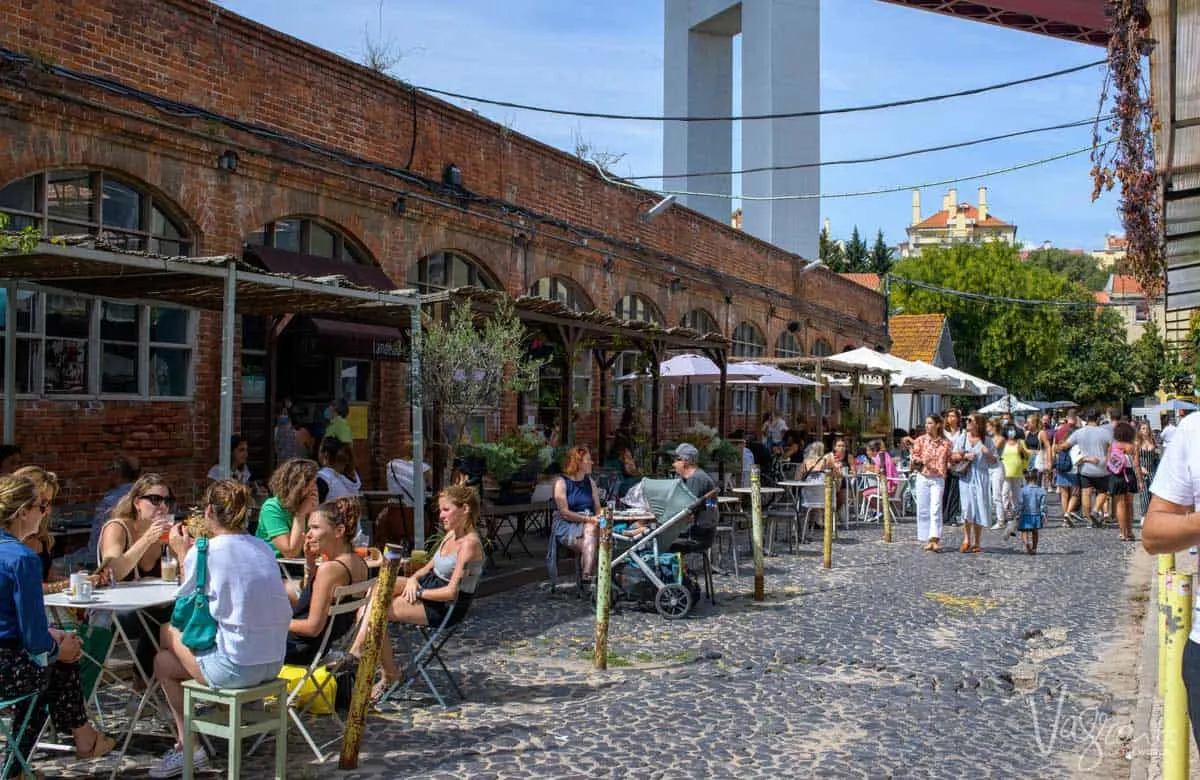
Reatail Therapy at Embaixada
Embaixada is a unique concept mall located in one of the most iconic buildings in the trendy neighbourhood of Príncipe Real. The Ribeiro da Cunha Palace, a stunning 19th century neo-Arabian Palace, has been transformed into a shopping and gallery space focusing on Portuguese design, craftsmanship, fashion, gastronomy and culture.
Browse an array of original Portuguese designers and artists or pop in for a drink or a meal and languish in the building’s incredible beauty.
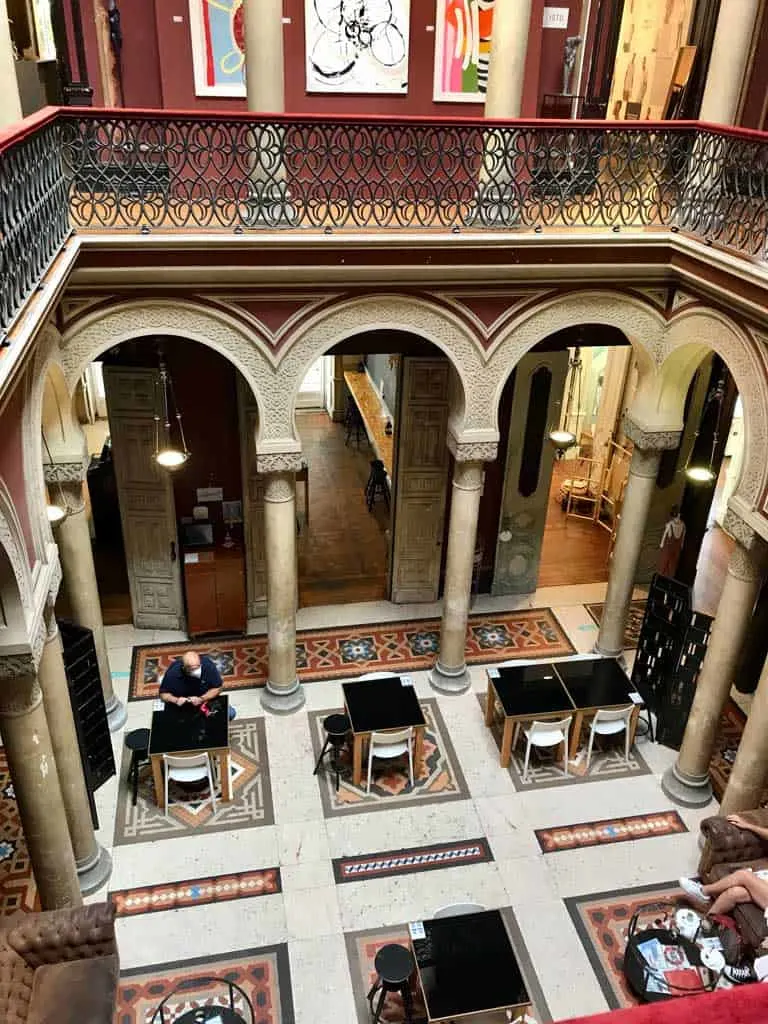
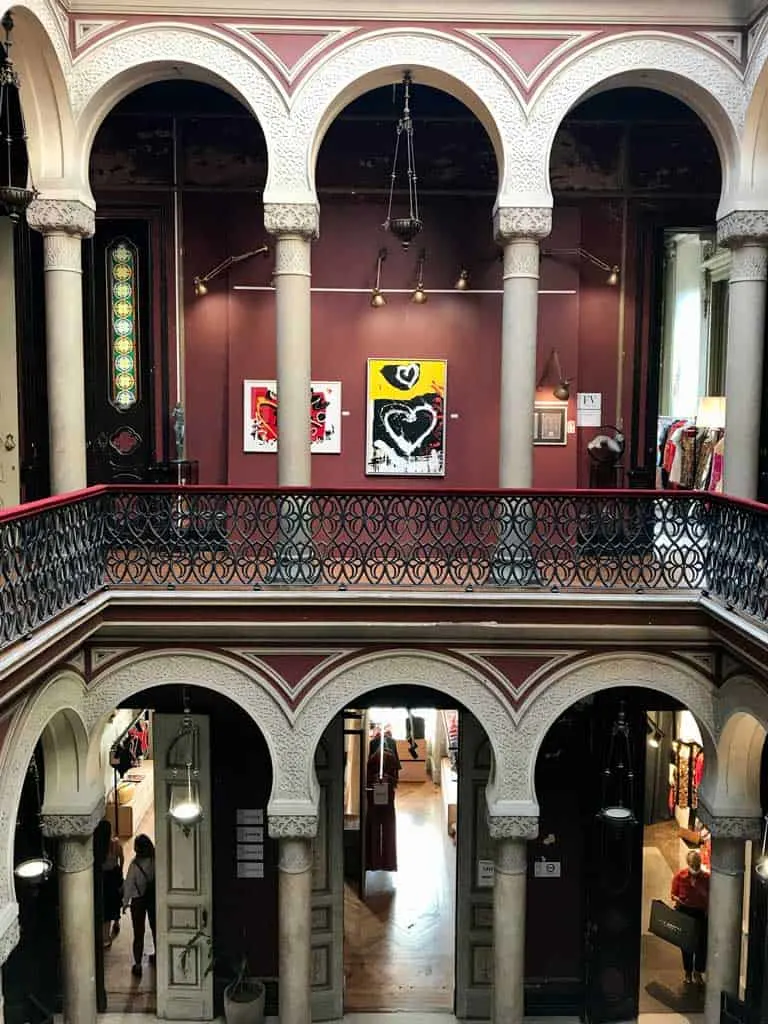
Fill Your Belly at Time Out Market
Sample the best of Lisbon under one roof. A huge selection of food outlets, bars, stores, and music venues are all under one roof at one of Lisbon’s most popular food markets. The world’s largest gourmet food market was once home to Lisbon’s best produce vendors.
The massive space now has a great collection of food carefully sampled and selected as the best in the city. From burgers to pizzas, sushi, and of course, Portugal’s famous bacalhau, you’ll find the best selection at Time Out. You’ll also find a cooking school, bars, and a club, so look out for live events on the Time Out Market site.
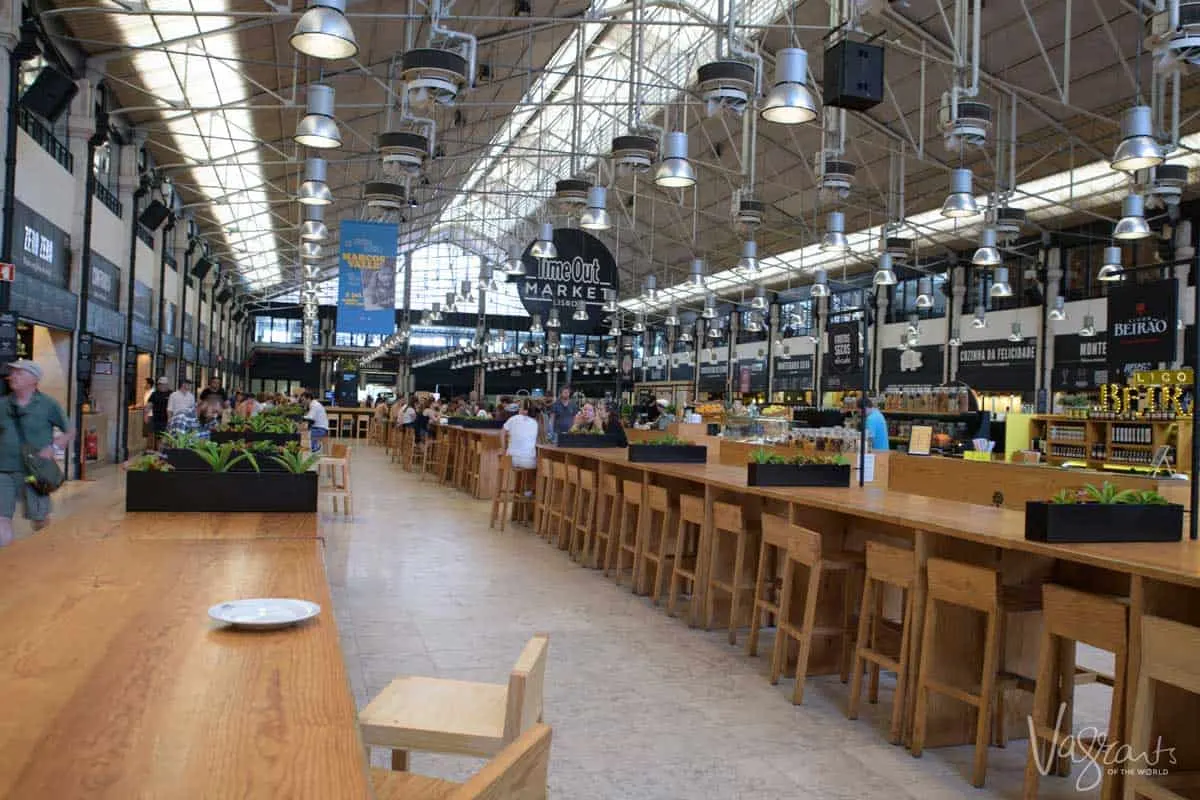
Explore Lisbon’s Street Art
Although the street art scene isn’t as widely known as the scenes in Berlin and London, urban art and murals in Lisbon are surprisingly great – even more so because it is not as well known so even more rewarding.
Following the 1974 revolution, the city’s walls became covered in political murals almost overnight. Today, street art has become such an important part of the city that artistic graffiti is sponsored by the Lisbon City Council.
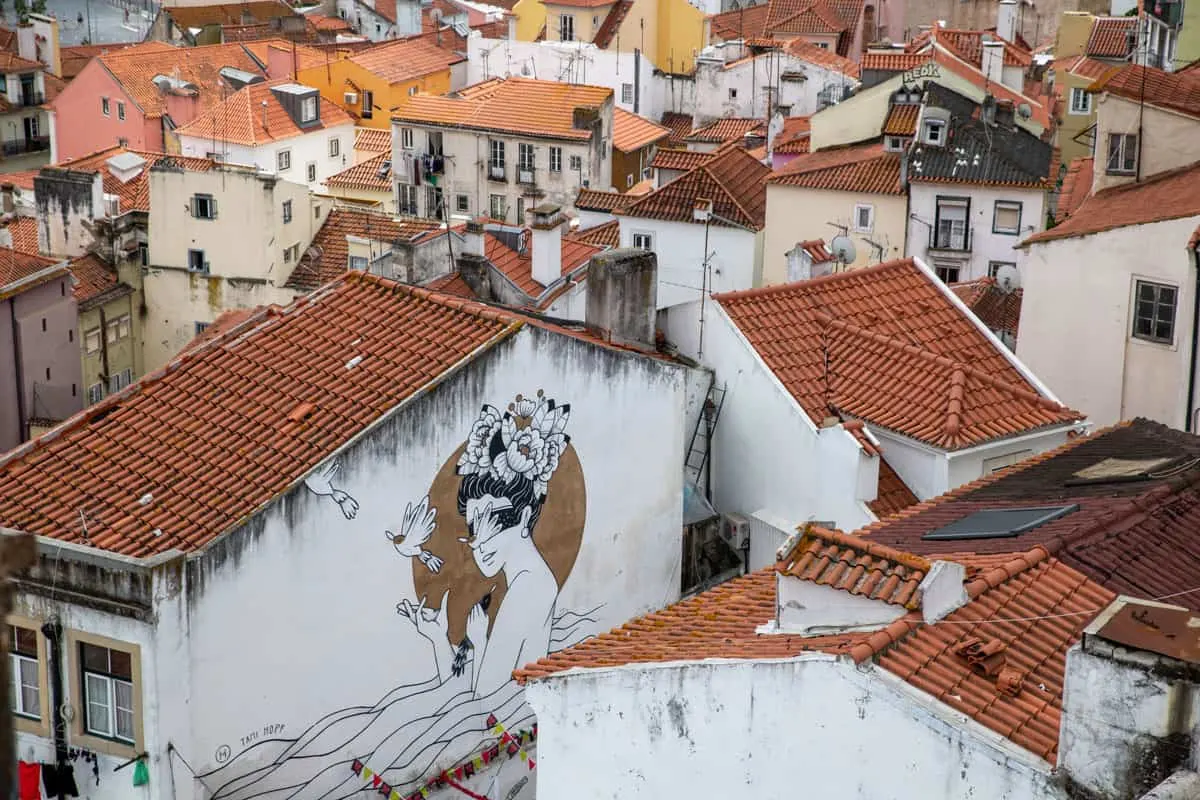
There are so many fascinating murals in the city that it would be impossible to list them all, but to start, head to Travessa dos Fiéis de Deus. Here, you’ll find a piece recalling the leftist propaganda that covered the area in the 1970s. For another stand-out piece, head to Calçada do Menino Deus, where you’ll see a clever piece that used the street’s cobblestones to create a mural of Fado superstar Amália Rodrigues. You can find some more street art locations here.
Lisbon’s Famous Viewpoints (Miradouros)
As it’s on a steep hill, Lisbon has no shortage of viewpoints overlooking the colourful city. The Portuguese word for viewpoint is ‘miradouro‘ so if you search this in Google Maps you’ll see results of place names with Miradouro in front. Chances are you’ll already be close to a viewpoint or two.
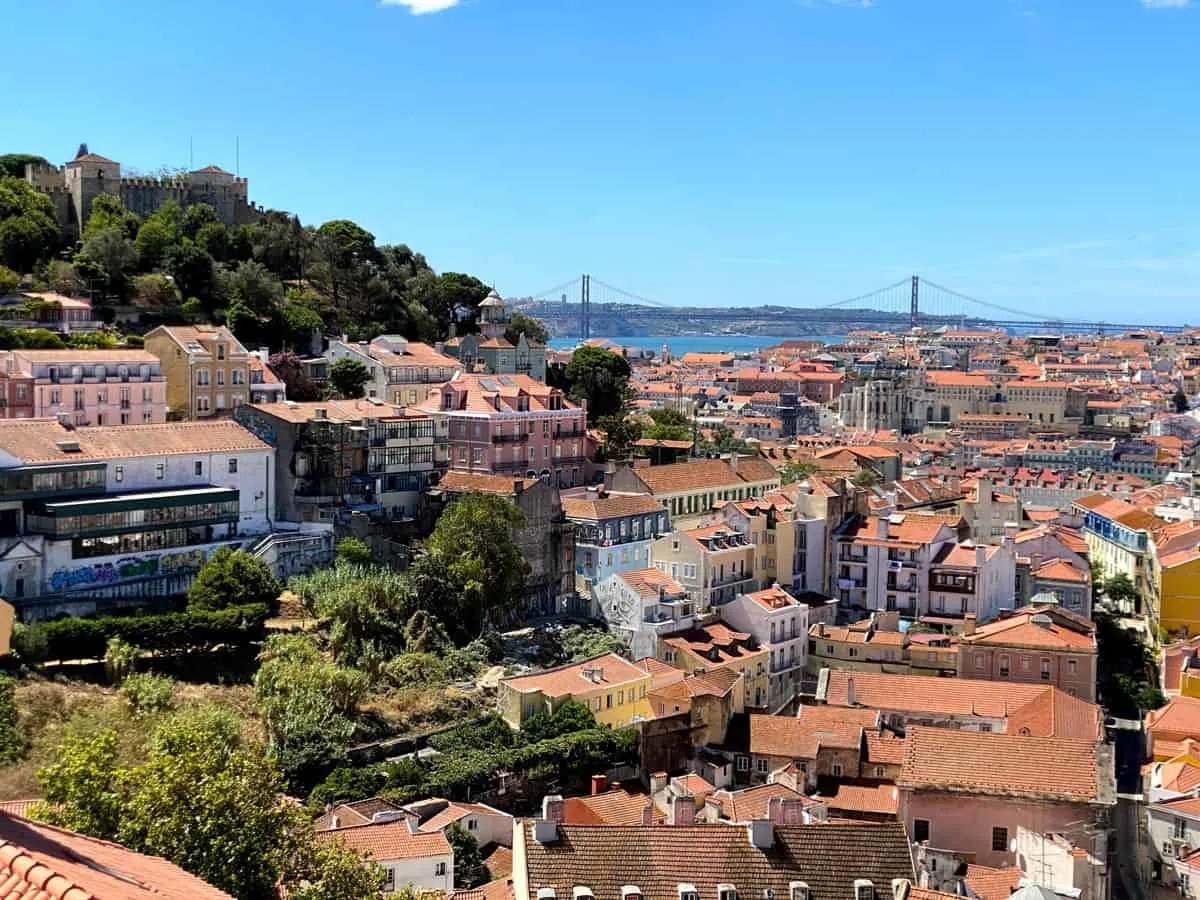
The viewpoints are particularly popular at sunset as you get expansive views of the sky as well as the city. However, the viewpoints are great to visit at any time of day. If you want to visit without crowds, try the afternoon when it is hottest, you’ll probably be the only one there.
For some of the best viewpoints in the city, head to Miradouro de Santa Luzia, Miradouro da Senhora do Monte, and Miradouro de São Pedro de Alcântara.
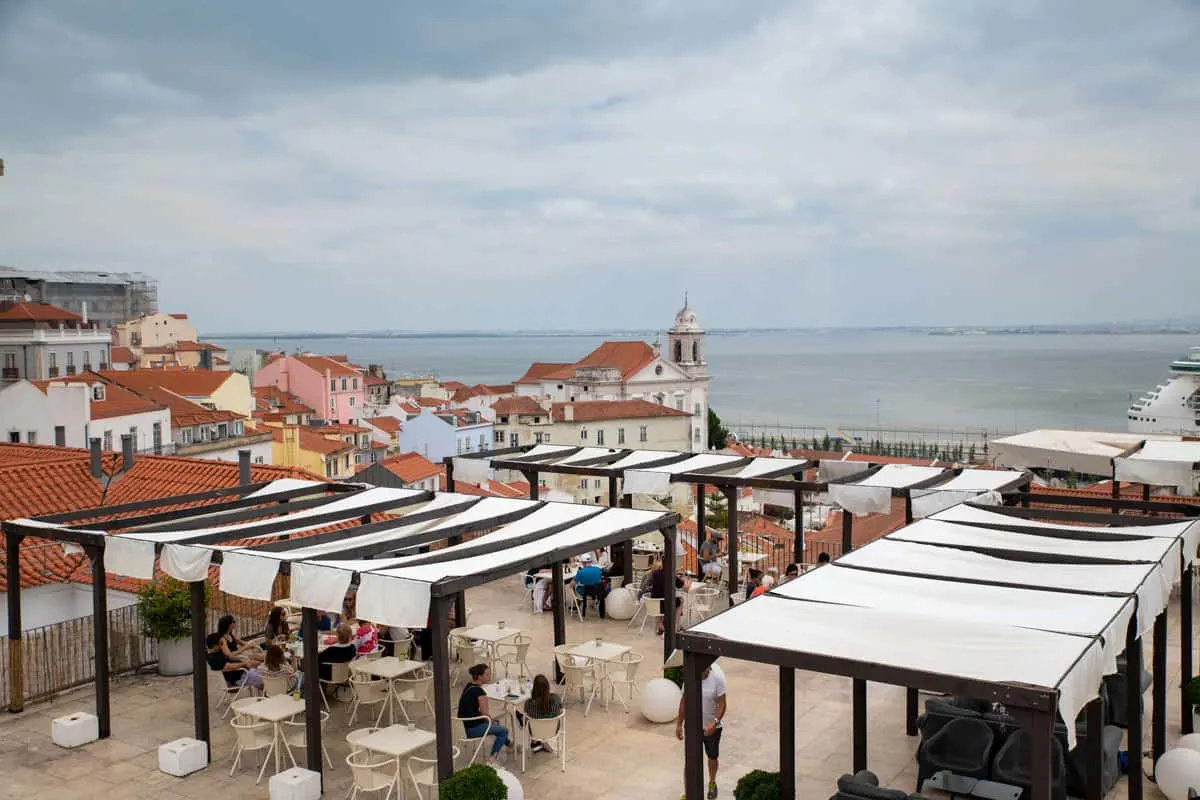
Panorâmico de Monsanto
Opening its doors in 1969, the 600 seat Restaurante Panorâmico de Monsanto was once the pearl of Lisbon. An architectural wonder with 360° views over the city, the restaurant is remembered fondly by locals. After a series of financial and management issues, the restaurant was abandoned in 2001. The building fell into disrepair and was only visited by random wanderers and graffiti artists.
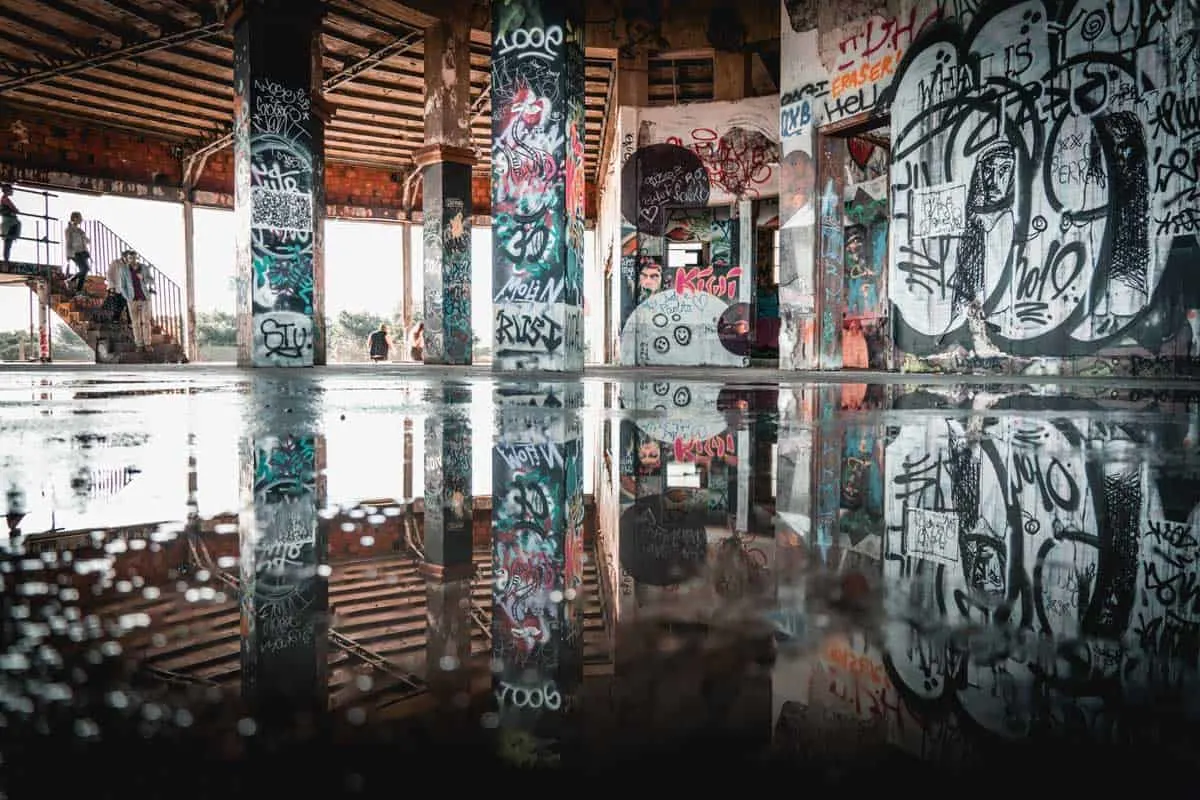
In 2017, Lisbon’s most loved viewpoint opened again to the public as one of the city’s best urban art displays.
While still essentially derelict, there are so many reasons to visit. You will find beautiful tile panels by Manuela Madureira on the ground floor. The spiral staircase and original floors give insight into how beautiful the restaurant must have been.
But it is on the third floor where the trip becomes truly worthwhile for the magnificent views over Lisbon, including a birds-eye view of the Aqueduto das Águas Livres. Restaurante Panorâmico de Monsanto is a fantastic photo opportunity for the street art, the building, and the views.
Open between 9.00 am – 6.00 pm. You can find out more about Panorâmico de Monsanto here.
See Lisbon’s Version of the Golden Gate Bridge (Ponte 25 de Abril)
Okay, so it’s not actually called the Golden Gate Bridge – it’s called the Ponte 25 de Abril, the 25th of April Bridge. But it’s undeniable that the bridge in the Belém neighborhood looks strikingly similar to the iconic San Franciscan one.
The Bridge’s name has a complicated history. It was built in 1966 and named Salazar Bridge after the Portuguese dictator. When he was overthrown, the bridge was renamed to celebrate the date of the revolution, the 25th of April.
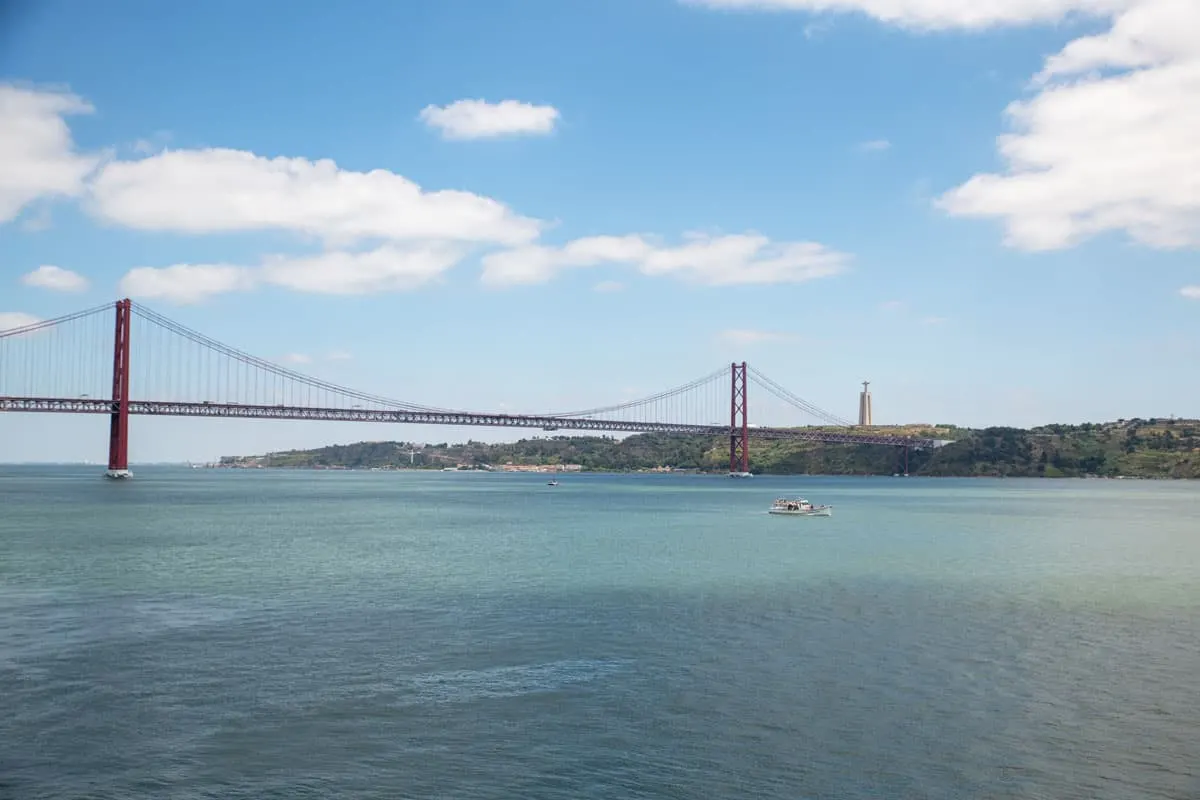
The 25th of April Bridge and the Golden Gate Bridge are similar in length (2.5km), were built by the same company, and are painted the same color. The only noticeable difference is the gaps on the main arches – in San Francisco, they’re square, and in Lisbon, they’re a diamond shape.
You can’t walk across the bridge. Still, it’s worth walking along the river from the Monument of Discoveries to get closer to it and snap some photos with the iconic statue Cristo Rei on the southern banks of the Tejo.
Eat Seafood in Almada
Jump on the ferry from Cais do Sodré in the city center and head across the river to Cacilhas in the municipality of Almada.
Many tourists simply transit through Cacilhas en route to the Cristo Rei statue, but it is worthwhile to spare some time, at least for a meal.
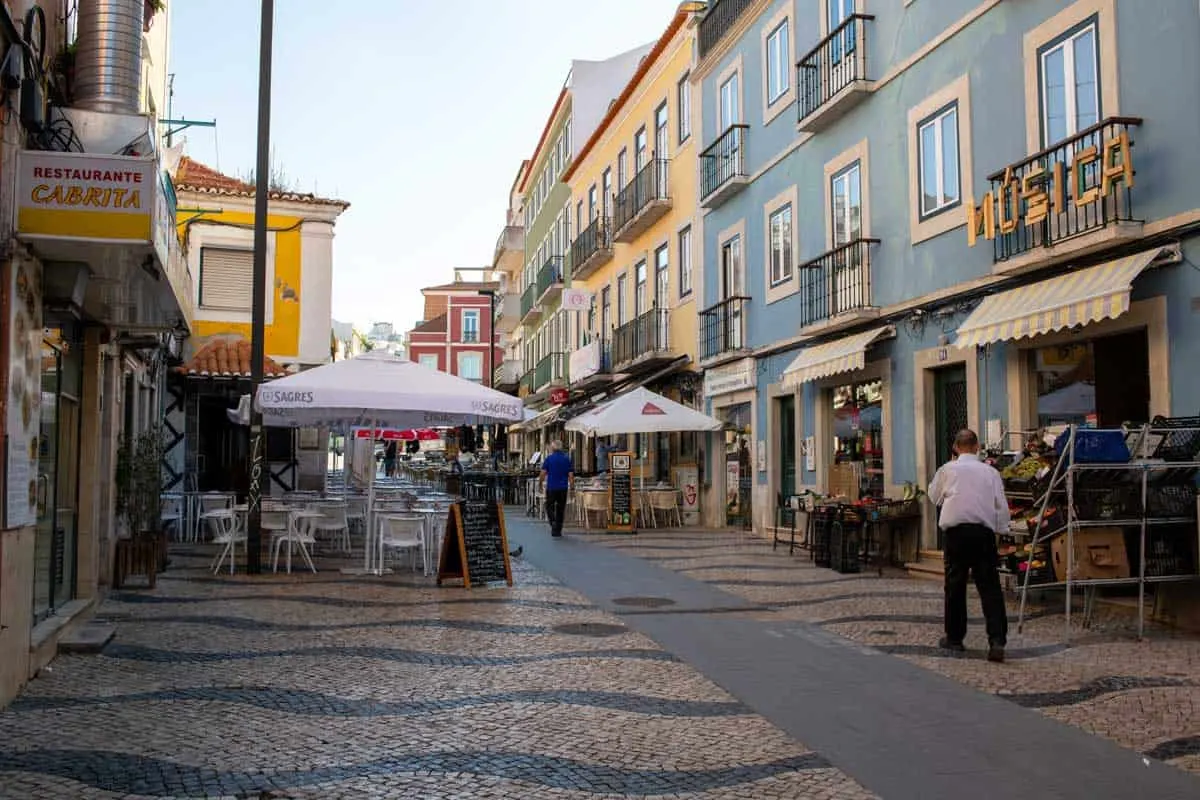
When you arrive at the Cacilhas terminal, you can head up the main street of Cacilhas, where you will find a vibrant inner-city village vibe and a good selection of cheap and cheerful seafood restaurants lining the main drag. Cacilhas is where Lisbon locals head to get their fill of quality seafood at a reasonable price.
You can also follow the waterfront west towards the Ponte Abril de 25 from the ferry terminal. The walkway offers magnificent views over Lisbon along the waterfront and a long stretch of creative street art and murals.
At the end of the walk are two of the most Instagramed restaurants in Lisbon – Ponto Final and Atira-te au Rio.
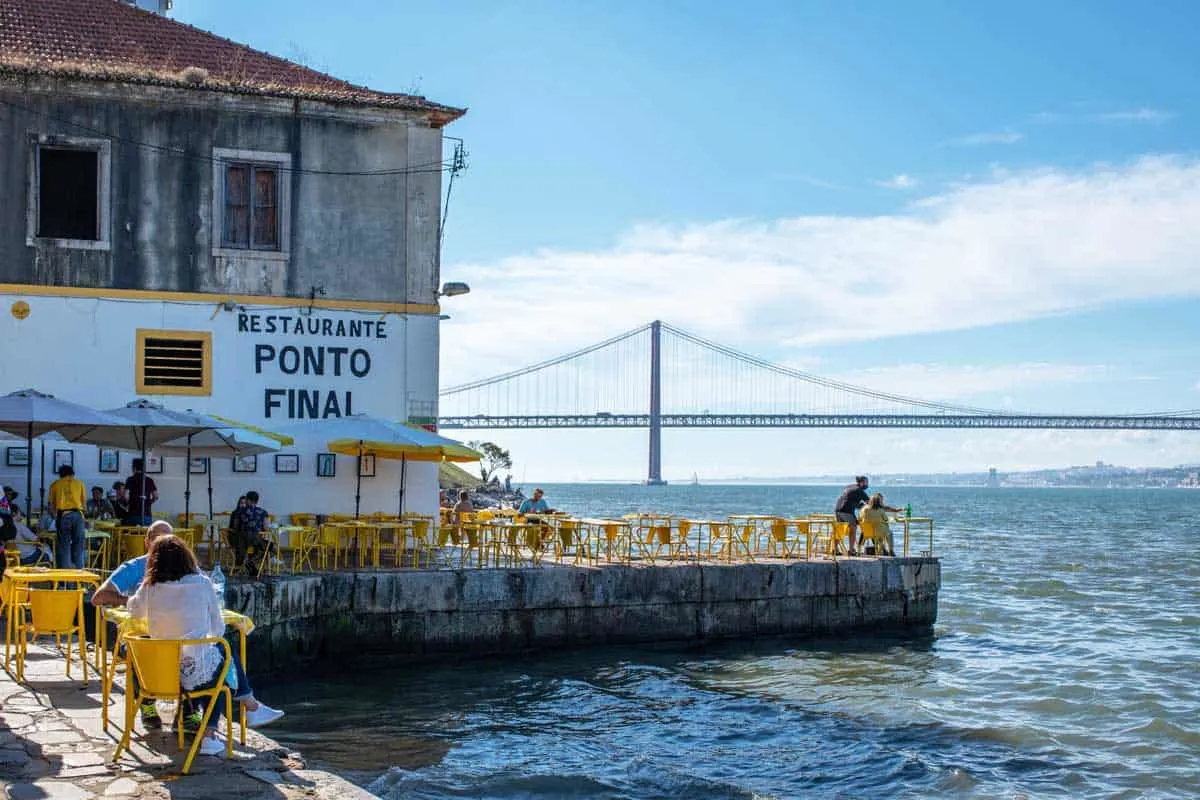
Very popular with tourists, it is an excellent spot for lunch and one of the best sunset spots in Lisbon, right by the water’s edge. Be prepared to wait for a table but don’t be too upset if you can’t get one; the seafood restaurants back down in Cacilhas serve the same style of seafood dishes, often for less. You don’t always get the views, but the atmosphere is local and very lively.
Ferries leave every half an hour or so from Cais do Sodré and only take 10-15 minutes each way. Expect around €1.25 each way.
Climb the Cristo Rei Christ the King Statue
Continue along the path past Ponto Final; you will find an elevator that takes you up to the top of the hill for some pretty special views.
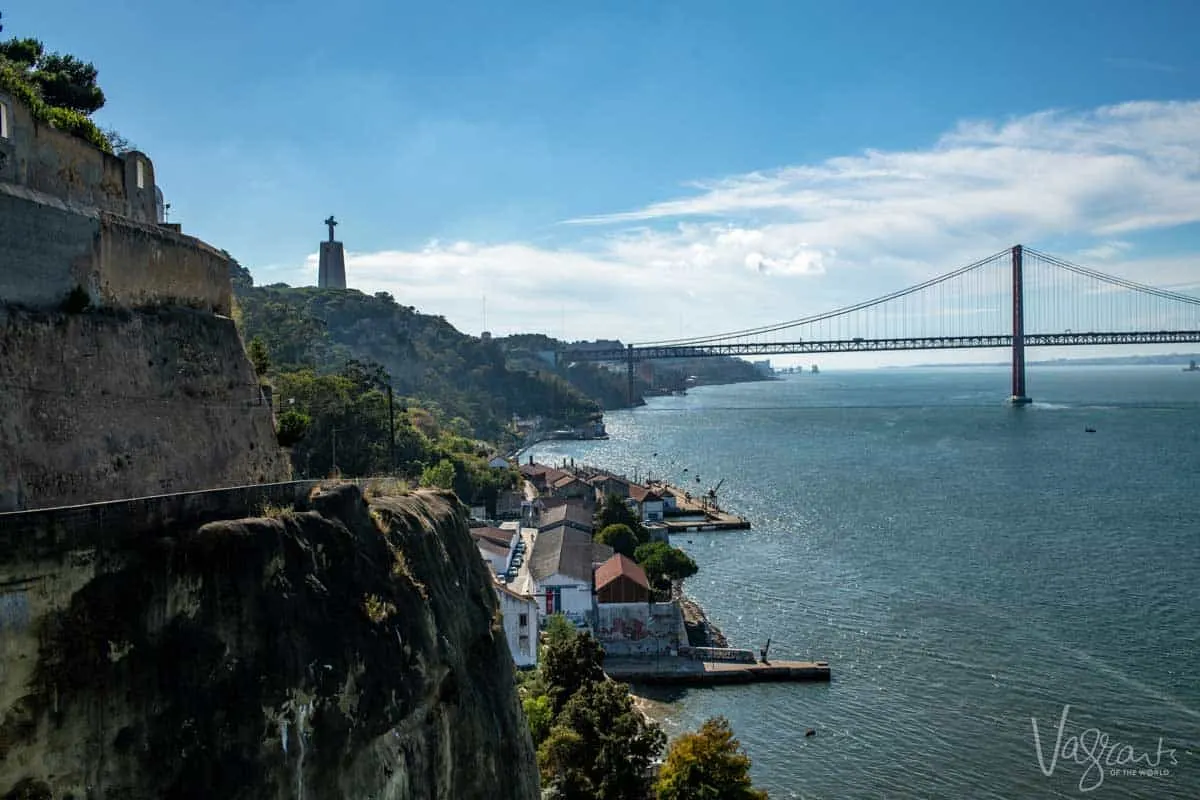
From there, you can continue to the Santuario Nacional de Cristo Rei, the Christ statue inspired by the Christ the Redeemer statue in Rio de Janeiro.
From the top of the giant Christ statue, you have views over the Ponte de Abril 25, often compared to San Francisco’s Golden Gate Bridge, and a birds-eye view of Lisbon and the Tagus River.
You can find more information, including the history of the shrine here.

If you want to get the whole experience of the bridge and the Christ the King Statue, you can book a 2-hour group Tuk Tuk tour across the 25 de Abril Bridge and to the Santuario Nacional de Cristo Rei. See here for full tour details.
Head to the Beach
Lisbon isn’t exactly on the coast (it’s on an estuary), but it’s close enough. With some of the best beach towns in Portugal within a short distance of the capital, there are a ton of beaches you can visit on day trips from Lisbon.
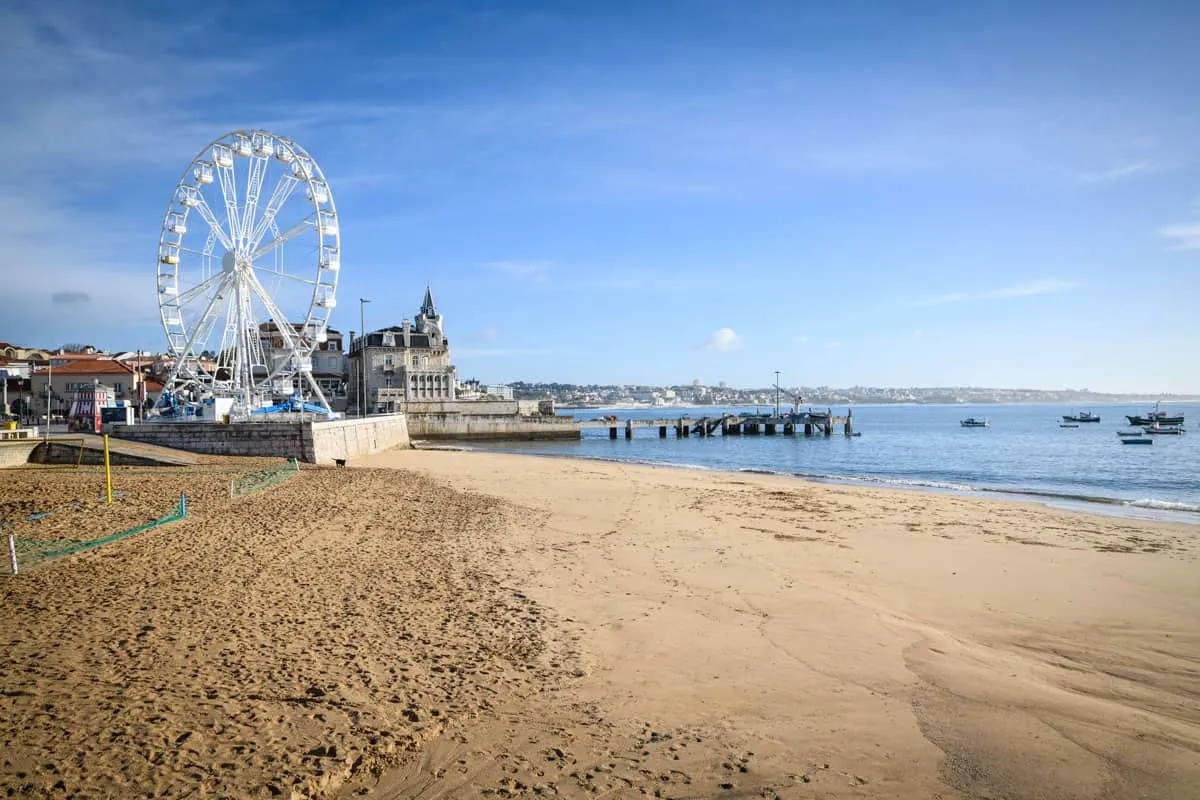
The best beaches near Lisbon are Praia de Carcavelos, Praia da Conceição in the town of Cascais (which also has great coastal walks that are free), and Praia de Santo Amaro de Oeiras.
Unfortunately, none of these beaches is walkable from Lisbon (the nearest beach, Praia de Santo Amaro de Oeiras, is 17km away). However, the train fares are as low as €1.55 each way, which is totally worth it for a full day of free relaxation at the beach and spectacular coastal walking.
Day Trips From Lisbon
If you’ve explored the Lisbon highlights and find yourself with more time, there are many fabulous day trips from Lisbon. Many are closer to the city center than you might think.
We have a comprehensive list of day trips from Lisbon here, but these are a few to get you planning.
There are a number of Lisbon day tours that include all of the highlights of the Portuguese countryside and coast near Lisbon. Discover the fairytale charm of Sintra, visit the beach and admire the stunning coastline at the westernmost point of continental Europe at Cabo da Roca and enjoy the unique coastal town vibe of Cascais. Full-day tours start at around USD 40 pp. You can find out more here.
Sintra Day Trip
How about a half-day Sintra tour to admire the beautiful UNESCO-listed Pena Palace in one of the most picturesque destinations in Portugal?
Only 30 minutes from the city, it’s one of the most popular day trips from Lisbon. See our guide for visiting Sintra from Lisbon for independent travelers and tour recommendations.
Cascais Day Trip
Make your way to the coastal resort town of Cascais, only 30 km west of the city. Popular for its sandy beaches and busy marina. The charming beachfront old town is home to the medieval Nossa Senhora da Luz Fort and the Citadel Palace, a former royal retreat.
Évora Day Trip
Only an hour and a half from Lisbon, the capital of the Alentejo, is a must-visit destination in Portugal. There is so much to do in Évora a day tour is the best way to maximize your time.
Day tours from Lisbon start at around €70 pp and include guides, transport, wine tastings, and much more. See here for a full list of tours.
See More of Portugal With This One Week Portugal Itinerary
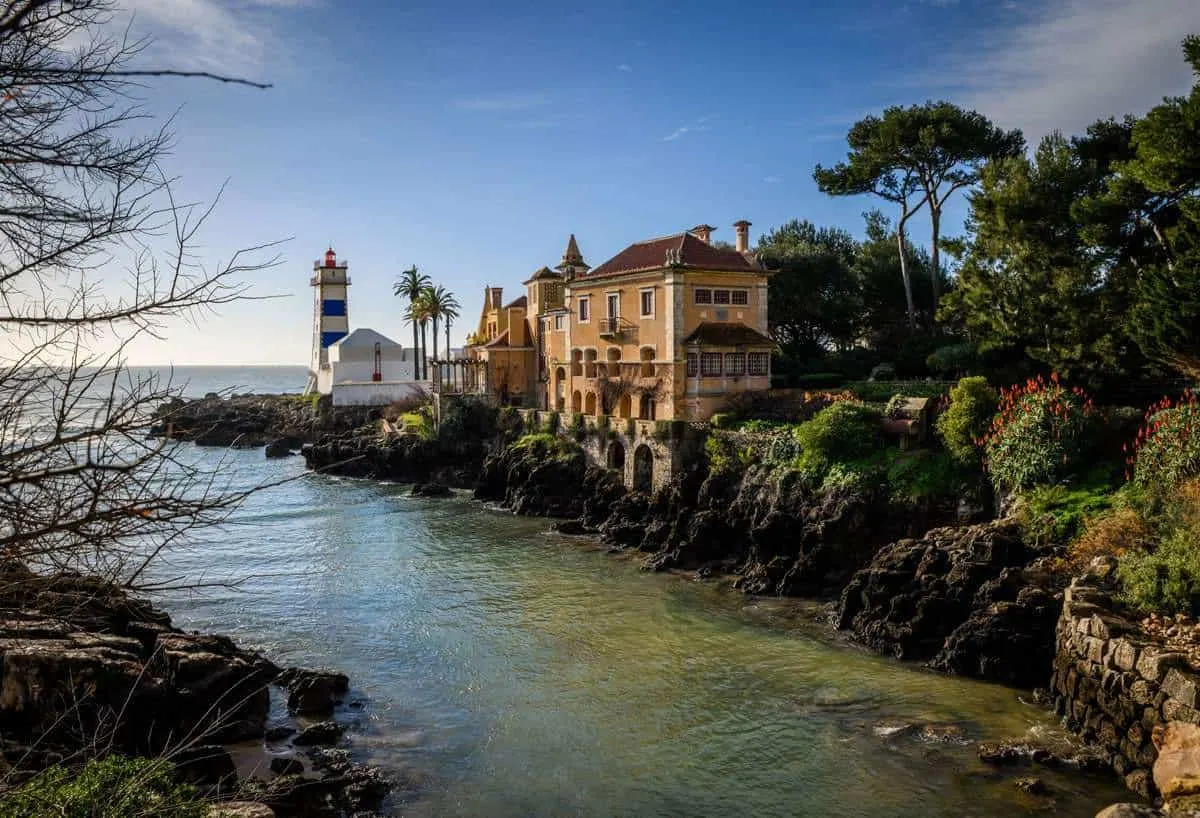
As you can see, Lisbon has so much to do for free. Whether you’re lounging on the beach, checking out the views of the city from a miradouro, or enjoying the sounds of a free fado performance, a trip to Lisbon doesn’t have to break the bank.
Where To Stay in Lisbon
There are plenty of great hotels in central Lisbon, but as with many cities, a self-contained apartment is a great way to enjoy Lisbon and often cheaper than staying in a hotel room. We often stay in a centrally located apartment to be close to all the Lisbon highlights and still have the advantage of self-catering when we don’t feel like eating out.
This comprehensive guide on where to stay in Lisbon gives you the low down on the best neighborhoods to stay in Lisbon.
Search the Latest Hotel Deals for Lisbon
Booking.comThis travel guide to Lisbon was put together in collaboration with Ella Moore.
Ella is the author behind the travel blog Many More Maps, which is all about fitting travel around the 9-5. As a tried and true budget backpacker, she loves traveling the world with as little money as possible. When she’s not working in London, you’ll find her on a free walking tour or frantically researching the best free things to do in a city before she arrives there. Portugal, Russia, and South Africa are her favorite countries to travel to on a budget.



